Don't wanna be here? Send us removal request.
Text
Revolutionising Resource Management with Advanced Fuel Management Systems
In an era where sustainability and efficiency are paramount, the quest for innovative solutions to optimise resource management has become imperative. Among the critical resources under scrutiny, fuel stands out as a focal point due to its widespread usage across industries and its significant impact on both economic and environmental landscapes. In response to this challenge, the advent of Advanced Fuel Management Systems (AFMS) heralds a new chapter in resource management practices. These sophisticated systems integrate cutting-edge technologies and strategic methodologies to not only streamline fuel usage but also minimise waste, reduce costs, and mitigate environmental footprints. This article delves into the transformative potential of AFMS, examining how they are reshaping traditional paradigms and propelling industries towards a more sustainable future.

The Critical Importance of Effective Fuel Management
In today's rapidly evolving industrial landscape, managing resources efficiently is not just an option—it's a necessity for survival and growth. Fuel, being one of the most vital resources across various industries, requires sophisticated management techniques to ensure optimal utilisation and minimal wastage. Enter the advanced Fuel Management Systems (FMS), a transformative solution for businesses aiming to enhance accuracy, security, and productivity in managing their fluid assets. This article delves into the world of Fuel Management Systems, highlighting their significance, components, and the exceptional capabilities they offer to modern businesses, particularly through the pioneering technology brought forth by Banlaw.
Fuel management stands as a linchpin in the operational efficiency and sustainability of numerous industries, ranging from transportation and logistics to manufacturing and construction. With fuel costs often representing a significant portion of operational expenses, any inefficiency or wastage can swiftly erode profit margins and hinder competitiveness. Moreover, in an era increasingly defined by environmental consciousness and regulatory scrutiny, the environmental impact of fuel consumption has become a pressing concern for businesses worldwide. Effective fuel management not only entails optimising consumption to reduce costs but also entails minimising carbon emissions and other pollutants, aligning operations with sustainability goals and regulatory compliance.
Enter Advanced Fuel Management Systems (AFMS), equipped with cutting-edge technologies and intelligent algorithms designed to revolutionise the way businesses manage their fuel resources. Unlike traditional manual methods or basic fuel monitoring systems, AFMS offer a comprehensive suite of functionalities tailored to address the complexities of modern fuel management challenges. From real-time monitoring and precise inventory tracking to automated dispensing and consumption analytics, these systems provide invaluable insights and control over every aspect of fuel usage. Moreover, AFMS leverages connectivity and data integration capabilities to seamlessly integrate with existing infrastructure, enabling businesses to streamline operations, enhance decision-making, and unlock new levels of efficiency and cost savings. One such trailblazer in the field of AFMS is Banlaw, whose innovative solutions are setting new benchmarks for fuel management excellence and driving sustainable practices across industries.
Understanding Fuel Management Systems
Fuel Management Systems (FMS) play a pivotal role across various industries, serving as the cornerstone for efficient fuel utilisation and cost optimization. At its core, an FMS comprises a sophisticated amalgamation of hardware and software components meticulously engineered to safeguard, supervise, and regulate fuel-related activities. Whether in transportation, manufacturing, or agricultural sectors, where fuel consumption significantly impacts operational budgets and environmental footprints, these systems serve as indispensable assets. Through the seamless integration of control mechanisms and advanced analytics, FMS empowers organisations to maintain a comprehensive grasp over their fuel supply chain, from procurement to distribution, fostering enhanced transparency and accountability at every stage.
One of the primary functions of Fuel Management Systems is to ensure the secure and judicious allocation of fuel resources, mitigating the risks associated with unauthorised access or pilferage. By employing cutting-edge technologies such as RFID tags, biometric scanners, and GPS tracking, these systems establish robust layers of authentication and verification, thereby fortifying the integrity of fuel inventories against potential breaches or discrepancies. Moreover, by interfacing with fleet management software and telemetry systems, FMS enables real-time monitoring of fuel consumption patterns, allowing for timely interventions to optimise efficiency and minimise wastage. Such proactive measures not only bolster operational resilience but also contribute to substantial cost savings and environmental stewardship in the long run.
The analytical capabilities embedded within Fuel Management Systems furnish organisations with invaluable insights into their fuel utilisation dynamics, empowering data-driven decision-making and strategic planning. Through sophisticated algorithms and predictive modelling, FMS can forecast future fuel demands, identify areas of inefficiency, and recommend optimization strategies tailored to specific operational requirements. Whether by streamlining route planning to reduce fuel consumption or implementing maintenance schedules to enhance vehicle fuel efficiency, these actionable intelligence derived from FMS pave the way for continuous improvement and sustainable growth. In essence, Fuel Management Systems emerge as indispensable assets in the contemporary landscape, offering a multifaceted approach to enhancing fuel economy, operational efficiency, and environmental sustainability for organisations across diverse sectors.
Banlaw’s Innovative Fuel Management Solutions
Banlaw’s prominence in the fuel management sector stems from its unwavering dedication to providing cutting-edge solutions that address the intricate requirements of industries such as mining, rail transportation, and construction. Through meticulous attention to detail and a keen understanding of sector-specific challenges, Banlaw has established itself as a trusted partner for organisations seeking to optimise their fuel usage and mitigate operational risks. Leveraging advanced technologies like SecureFillTM and ResTrackTM, Banlaw ensures unparalleled precision in fuel monitoring and reconciliation, boasting an impressive track record of surpassing the 99.5% mark in fluid reconciliation rates. This commitment to accuracy not only enhances operational efficiency but also bolsters clients' confidence in their fuel management processes.
A cornerstone of Banlaw's success lies in its continuous pursuit of innovation, driven by a passion for excellence and a commitment to exceeding customer expectations. By staying at the forefront of technological advancements, Banlaw remains well-equipped to tackle emerging challenges and capitalise on new opportunities in the ever-evolving landscape of fuel management. Their specialised hardware and software solutions not only enhance fuel security and efficiency but also streamline regulatory compliance, providing clients with a comprehensive suite of tools to navigate complex industry requirements with ease. Through ongoing research and development initiatives, Banlaw remains poised to revolutionise the fuel management industry, driving progress and empowering clients to achieve their goals with confidence.

In a world where efficient resource utilisation is paramount, Banlaw stands as a beacon of innovation and reliability, offering tailor-made solutions that empower businesses to thrive in competitive environments. By fostering a culture of collaboration and continuous improvement, Banlaw remains dedicated to pushing the boundaries of what's possible in fuel management, driving positive change and delivering tangible value to clients worldwide. As industries continue to evolve and adapt to new challenges, Banlaw remains steadfast in its commitment to providing forward-thinking solutions that pave the way for a more sustainable and efficient future.
Key Features and Functionalities of Banlaw FMS
Banlaw's Fuel Management Systems (FMS) are distinguished by a rich set of features and functionalities designed to streamline the management of fuel resources across various industries. One of the standout features is the comprehensive handling of fuel delivery and storage processes. By accurately matching delivery dockets with physical consignments, Banlaw's systems provide an essential layer of transparency and accountability, minimising discrepancies and ensuring that fuel inventory remains accurately documented. Additionally, the systems support authorised access controls, safeguarding fuel storage facilities against unauthorised usage or tampering. Automated monitoring of fuel storage levels further enhances operational efficiency by providing real-time insights into inventory status, allowing for timely replenishment and optimization of resource allocation.
Efficient fuel dispensing is another key aspect of Banlaw's FMS, aimed at reducing fuel theft and enhancing fueling procedures. Leveraging advanced technologies such as Auto ID, Banlaw's systems enforce strict authentication protocols to ensure that fuel is dispensed only when proper identification is provided. This not only mitigates the risk of unauthorised fuel usage but also promotes accountability among users, fostering a culture of responsible fuel management. By automating the dispensing process, Banlaw's systems minimise human error and optimise throughput, enabling organisations to maximise the utilisation of their fuel resources while minimising waste.
At the heart of Banlaw's FMS lies the ResTrackTM software, a powerful tool that empowers organisations with remote monitoring and management capabilities. Through real-time data analytics and reporting functionalities, ResTrackTM provides invaluable insights into fuel usage patterns, consumption trends, and operational performance metrics. This enables proactive decision-making and strategic planning, allowing organisations to optimise their fuel management strategies for maximum efficiency and cost-effectiveness. Moreover, ResTrackTM facilitates compliance with regulatory standards by providing audit trails, documentation, and reporting features, ensuring that organisations remain in full adherence to industry regulations and environmental mandates. Overall, Banlaw's FMS, with its robust features and advanced functionalities, offers a comprehensive solution for fuel management challenges, empowering organisations to achieve greater operational excellence and sustainability.
A Strategic Asset for Future-Ready Businesses
Implementing Banlaw’s FMS not only optimises fuel usage but also integrates safety and environmental compliance into the fuel management process. The Dry Break Auto ID and Splash Fill Auto ID technologies exemplify Banlaw's commitment to providing secure and environmentally conscious solutions. These features not only streamline operations but also significantly reduce the risk of fuel spillages and theft, translating into cost savings and enhanced operational integrity.

For business owners, investing in a robust Fuel Management System like that offered by Banlaw signifies a step toward sustainability and efficiency. With its comprehensive features and reliable performance, Banlaw’s FMS stands out as a strategic asset that propels businesses towards achieving superior control and optimization of their fuel resources. In an era where every drop counts, having a system that offers precise management and substantial productivity gains is invaluable.
Take a decisive step towards transforming your business operations by integrating Banlaw’s leading-edge Fuel Management Systems. Contact Banlaw today to discuss your specific needs and see how their customised solutions can significantly benefit your business. Unlock the potential of advanced fuel management—because when it comes to resource efficiency, every measure matters. This comprehensive exploration into Fuel Management Systems clarifies their importance and showcases how Banlaw’s cutting-edge solutions pave the way for enhanced security, efficiency, and compliance in industrial fuel management. As industries continue to evolve, so too does the technology that supports them, making Banlaw’s FMS an indispensable tool for modern businesses.
0 notes
Text
Optimal Rail Fixings for Business Efficiency
In the fast-evolving sector of railway maintenance and construction, selecting the right rail fixings is a strategic decision that transcends basic operational needs. These components, crucial for securing rails to sleepers, ensure the safety and efficiency of rail operations. This introductory overview examines the technological advancements and associated business benefits of using contemporary rail clips and clamps, focusing on Types BR, LR, and HD. For business owners in the railway industry, these insights provide a gateway to adopting more cost-effective, resilient, and easy-to-install solutions that can transform operational capabilities.
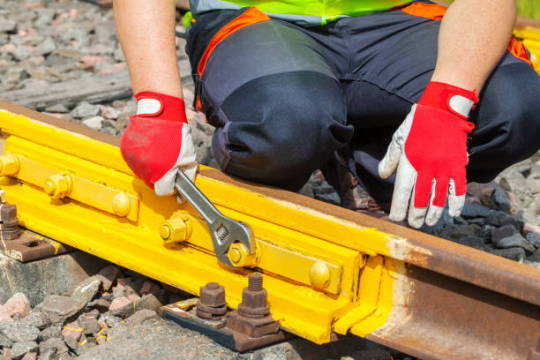
Introduction to Rail Fixing Innovations
The global railway network is witnessing an unprecedented focus on enhancing operational efficiency and safety through technological innovation. Central to this focus are the rail fixings that play a vital role in the construction and maintenance of railway tracks. Efficient rail fixings reduce maintenance requirements and extend the lifespan of railway tracks, ultimately leading to considerable cost savings and reliability in service delivery.
As railway infrastructure continues to age and expand, the demand for more innovative fixing solutions becomes increasingly critical. Modern rail fixing technologies offer significant advantages over traditional methods, such as reduced installation times and improved durability. These innovations not only support the strategic business objectives of reducing operational costs but also align with global trends towards more sustainable and environmentally friendly construction practices.
Exploring Type BR – Rail Clip
The Type BR Rail Clip is specifically designed for low-speed applications and is particularly effective when used with steel beams or rails. Featuring a non-rotational skirt during installation, this rail clip ensures a stable, secure fit, which is crucial for maintaining the integrity and alignment of the track structure. The adaptability of the BR tail to span slotted holes makes it a versatile choice for various rail settings, accommodating flanges up to 8 degrees.
Moreover, the ease of installation associated with the Type BR Rail Clip marks a significant step forward in reducing labour costs and time spent on track laying and maintenance. Its design eliminates the need for welding, a process that can be time-consuming and requires specialised skills. This reduction in complexity not only speeds up the project timelines but also lowers the barrier for teams to execute necessary installations or repairs, thus enhancing overall operational efficiency.
Business owners will appreciate the Type BR Rail Clip for its cost-effectiveness and reliability. By opting for such innovative solutions, businesses can achieve better resource allocation, devoting saved time and finances to other critical areas of operation. Additionally, the simplicity and effectiveness of the BR clip make it an attractive option for projects requiring quick turnaround and long-term durability, reinforcing its value in the rail industry's competitive market.

The Versatility of Type LR – Adjustable Steelwork Clamp
Type LR's self-adjusting capabilities make it an indispensable tool for railway applications involving variable flange thicknesses or slopes up to 15 degrees. This adjustability ensures a secure fit across a range of scenarios, making it an ideal choice for projects with less predictability in rail dimensions. The clamp's extensive clamping range facilitates the specification of a single product type for diverse applications, simplifying procurement and inventory management.
The installation of Type LR clamps is streamlined and efficient, reflecting a design philosophy that prioritises adaptability and user-friendliness. This approach reduces the risk of incorrect installations and enhances the structural integrity of rail connections. By accommodating different slopes and flanges, the LR clamp significantly reduces the need for custom solutions, which can be costly and time-intensive to implement.
From a strategic business perspective, the Type LR clamp is a smart investment for companies looking to enhance their operational flexibility. It supports a range of applications, ensuring that business owners can respond to varying project demands without compromising on quality or safety. The clamp’s versatility also means that companies can retain fewer stock variations, leading to improved asset management and reduced overhead costs, further solidifying its role as a cornerstone in modern rail fixing solutions.
Advancements with Type HD – Rail Clamp
Lindapter’s Type HD Rail Clamp is renowned for its precision in rail alignment, offering extensive lateral adjustability. This feature is crucial for maintaining optimal track geometry, essential for safety and smooth operation. The availability of different variants caters to specific requirements, providing a tailored approach that enhances the clamp’s utility in diverse settings.
This clamp's ability to facilitate precise rail positioning is particularly valuable in scenarios where exact alignment impacts operational efficiency and safety. The lateral adjustability not only compensates for natural ground movement and settling but also facilitates easier maintenance and adjustments throughout the lifespan of the rail track. This adaptability reduces downtime and ensures continuous, reliable service -- key considerations for any business in the transport sector.
Implementing the Type HD Rail Clamp can significantly enhance the effectiveness of rail installations. Its robust design and precision engineering ensure long-term durability and reliability, factors that drive down the total cost of ownership and maximise return on investment. For business owners, the HD clamp offers a compelling balance of upfront cost, ease of use, and operational benefits, making it an essential component of modern railway infrastructure planning.
Strategic Implications for Business Owners
For business owners in the railway sector, embracing cutting-edge rail fixing technologies like the Types BR, LR, and HD is crucial for enhancing operational efficiency and safety. These advanced solutions not only provide superior securing capabilities but also offer significant economic advantages through their durability, ease of installation, and cost-effectiveness. Adopting these technologies can be a strategic move, leading to better resource utilisation and positioning businesses for growth in a competitive market.

As the industry advances, the strategic integration of innovative rail fixing solutions into business models is becoming increasingly important. These technologies not only support current operational needs but also provide the flexibility to adapt to future challenges, ensuring long-term sustainability and success. Business owners stand to gain not only enhanced operational capabilities but also a stronger market position by prioritising investment in these advanced rail fixing solutions.
The railway industry is poised for significant growth and evolution, with a clear shift towards more efficient, reliable, and cost-effective construction and maintenance solutions. For industry leaders, the decision to invest in advanced rail fixings like Types BR, LR, and HD is not just a matter of improving operations but also a strategic imperative to stay ahead in an increasingly competitive market. By incorporating these state-of-the-art technologies into their operations, business owners can ensure superior performance, safety, and profitability, setting a new standard in railway infrastructure development.
0 notes
Text
The Efficiency of Modern Fuel Management Systems for Fixed and Mobile Storage
In the continuously evolving industry of fuel, managing the complexities of storage has always been a pressing concern. But with the advent of modern fuel management systems, the game is noticeably changing. Today, these sophisticated systems deliver profound advantages not only to fixed fuel farms but also to mobile storages like service trucks. Welcome to the era of revolutionising fuel industries, where the versatility and efficiency of fuel management systems are transforming operations with increased reliability and minimise risks.

As we witness this transformation, understanding the nuances of these modern solutions becomes crucial. This article aims to delve into the specifics of fuel management systems, explaining their suitability for both fixed and mobile storage. We will explore their key features, including tank overfill prevention, tank level monitoring, fluid loss control, and fuel-stock condition management. So, whether you're an industry professional or simply curious, this journey of unravelling the intricacies of fuel management systems promises to shed new light on fuel industries' progressive future.
Understanding Fuel Management Systems
Understanding the intricacies of modern fuel management systems requires a fundamental recognition of both their purpose and operation. In essence, a fuel management system is an innovative technology designed to facilitate the effective supervision and optimization of fuel consumption and storage. Its primary task? To control, monitor, and manage the usage, distribution, and inventory of fuel within an organisational structure, providing a solution that is as efficient as it is necessary.
From a practical standpoint, these systems boast of advanced functions such as real-time tracking of fuel levels and consumption, detailed reporting, and preventive measures against risks like overfills. Utilising sensors, gauges and complex software, they provide a comprehensive analysis of fuel usage, flagging inefficiencies for immediate intervention and potential calibration. This kind of proactive management alleviates traditional difficulties in fuel control and drives economic and functional advantages in its stride.
However, the scope of fuel management systems extends beyond these operational benefits. They hold a critical position within the fuel industry, playing a pivotal role in executing effective, sustainable and safe fuel usage protocols. By delivering a higher control level over fuel resources, they significantly contribute to accelerating operational efficiency, reducing environmental impact, and promoting safety within the workplace.
Fuel industries have come to rely heavily on these systems for managing their extensive fuel inventory. They bring unparalleled precision to inventory management, negating the need for manual checks, reducing errors, and freeing up significant manpower for more strategic tasks. The wealth of data collected by these systems also provides a much-needed insight into consumption patterns and inefficiencies, leading to improved strategies and cost savings.
In a nutshell, fuel management systems have shifted from being seen as an operational luxury to a business essential in the fuel industry. Its integral role in promoting efficiency, safety, environmental sustainability, and cost-effectiveness has indeed reshaped industry processes, adding a layer of sophistication that's becoming harder to ignore in today's fast-paced, technology-driven world.
Therefore, these intelligent systems' importance cannot be overstated, given their profound influence over the execution and management of everyday fuel operations across various industries. They represent a significant stride towards a more sustainable and efficient future for global fuel industries.
Fuel Management Systems: For Fixed Fuel Farms
In the world of fixed fuel farms, where large volumes of diverse fuels are stored and managed, establishing effective monitoring and control is paramount. That is where fuel management systems prove to be an ideal solution. Designed with a universal applicability that seamlessly fits onto the structure of fixed fuel farms, these systems have truly revolutionised the traditional ways of fuel handling.
Fuel farms often encounter challenges such as assessing accurate inventory levels, mitigating fuel theft, handling potential operational hazards, and streamlining fuel distribution. Fuel management systems address these concerns adeptly. With real-time tank level monitoring, they eliminate the guesswork involved in manual monitoring. By tracking fuel consumption and distribution, they deter theft and leakages by flagging anomalies. Moreover, their in-built protection against tank overfilling boosts the safety profile of these fuel farms.
Additionally, these state-of-the-art systems offer a precise overlook on the fuel-stock condition, contributing to better resource planning and management. With these systems in place, operators can ensure the optimal quality of their fuel stock. It minimises the risk of fuel contamination, a frequent issue in fixed fuel farms that can lead to considerable operational and financial losses.
On top of the operational advantages, these powerful tools also impart significant cost-saving benefits to fuel farms. They manage to reduce unnecessary waste, promote efficiency in distribution, and help avoid costly spills or leaks. Accurate data reporting also provides operators with a detailed and reliable analysis of their performance, leading to better-informed decisions on resource allocation and usage.
Fuel management systems tailor perfectly to the demands of fixed fuel farms, equipping them with the tools to perform more efficiently. By promoting safety, enhancing monitoring and control, and improving fuel-stock management, these systems offer a bright new vision of operational excellence for fixed fuel farms, firmly anchoring their position in the heart of the fuel industry's future.
Therefore, the suitability of fuel management systems for fixed fuel farms is evident, optimising operations with an efficacy that is simply unmatched by traditional means, and marking a significant step towards a more digitised, safe and efficient future for fuel farms worldwide.

Fuel Management Systems: For Mobile Storages
The propulsion of fuel management systems into the sphere of mobile storage, including service trucks, has led to a new dawn of operational capability and efficiency. These vehicles, often tasked with transporting and delivering fuel to onsite, often challenging locations, now have a formidable ally in these innovative systems.
One of the most significant advantages service trucks derive from the installation of fuel management systems is the ability to accurately monitor fuel levels on the go. In the dynamic, fast-paced environment of mobile fuel storage, this function can be decisive in averting risks and optimising delivery schedules, making the fuel transportation process more efficient and secure.
Moreover, with fluid loss control, these systems provide a security net against theft, leaks, or overuse of fuel. Accurate tracking and management of fuel usage ensure that every gallon of fuel is accounted for, reducing unexpected costs and maintaining the quality required for optimal service truck operation.
Now, let's enlighten on a real-world example showcasing the efficiency of fuel management systems in mobile storage scenarios. Consider a fleet of service trucks operating in remote and diverse terrains, carrying precious cargos of fuel. These can range from an oil rig in the middle of the ocean to a mining site located in a mountainous region. With the advent of an integrated fuel management system, the fleet operators can receive real-time updates on their fuel levels, consumption rates, and potential system issues, directly on their devices.
Another case in point would be a large-scale construction site, where various vehicles, including service trucks, need regular fueling. A robust fuel management system can streamline this process, ensuring that there is minimal downtime due to unnecessary fuel shortages, leaks, or overfills. This would significantly improve productivity and efficiency at the site.
Fuel management systems enhance service truck operations to an unprecedented level, making them crucial for industries relying heavily on these vehicles for their fuel transportation and supply needs. By ensuring optimal utilisation of resources and using real-life data for informed decision-making, these systems truly manifest the perfect synergy of technology and efficiency for mobile storage units, redefining the potential of fuel industries worldwide.
Key Features of Modern Fuel Management Systems
To fully grasp the revolutionary impact of modern fuel management systems, it is vital to explore their essential features, which together form a harmonious blend of efficiency, safety, and sustainability.
The first significant attribute is overfill prevention. Overfilling tanks can lead to hazardous spills, potential damage to storage containers, and unnecessary waste of resources. By making overfill prevention a key focus, fuel management systems champion safety and sustainability. These innovative systems utilise advanced sensors to alert operators whenever fuel levels are reaching maximum capacity, thus averting potential disasters and promoting an environmentally responsible practice.
Next up is tank level monitoring. Traditional methods of monitoring can be cumbersome, often leading to inaccurate and inefficient outcomes. Modern fuel management systems remedy these drawbacks. They offer real-time and accurate tracking of fuel levels in each tank, enabling operators to understand consumption patterns, plan refills, and importantly, maintain optimal levels for improved efficiency. Real-time data provides operators with invaluable insight, ensuring continuity of operations and averting last-minute supply crises.
Fluid loss control, another key feature, focuses on minimising wastage and driving cost savings. Leakage, theft, and overuse contribute to substantial fuel loss annually that can take a considerable toll on an organisation's finances. Utilising intelligent alerts and sophisticated tracking methods, fuel management systems allow operators to promptly identify and rectify potential fluid loss issues. This proactive approach is a crucial step towards sustainable and economical fuel usage.
Finally, modern fuel management systems provide comprehensive fuel-stock condition management. Ensuring the quality of the stored fuel is as important as managing the quantity. By monitoring parameters such as fuel age, temperature, and contamination, these systems help maintain the quality of fuel-stock, affecting the overall performance and longevity of machinery running on it.
Modern fuel management systems ingeniously interweave vital functions like overfill prevention, tank level monitoring, fluid loss control, and fuel-stock condition management. These mainstay features collectively ensure a fuel operation that is as safe and sustainable as it is efficient and cost-effective, ushering in a new benchmark of excellence for the fuel industry.
The Future of Fuel Industries with Fuel Management Systems
As we look ahead, it's clear that the future of fuel industries will be indelibly marked by the continuous evolution of fuel management systems. Emerging technologies and deeper understanding of operational nuances promise an exciting era brimming with potential advancements that will further redefine efficiency and sustainability in fuel management.
Innovations in artificial intelligence, machine learning, and data analytics are expected to transform the way these systems operate, making them more predictive and smarter. We might see systems capable of forecasting fuel demand based on usage patterns, or suggesting proactive maintenance based on machine learning algorithms. These kinds of advanced solutions would not only improve efficiency but also significantly reduce the risk of major operational setbacks.
Moreover, the integration of IoT (Internet of Things) devices could fashion a network of interconnected sensors providing real-time data from every corner of fuel operations. This could drastically improve the reaction times to abnormalities or emergencies, again boosting operational reliability.
Investing in modern fuel management systems will no doubt be a strategic imperative for businesses aware of their long-term benefits. Foremost among these is sustainability, a critical factor in today’s eco-conscious environment. Through efficient fuel usage and spill prevention, businesses can significantly reduce their environmental footprint, aligning their operations with the global demand for greener practices.
Another substantial long-term benefit comes in the form of optimised operational costs. By minimising wastage, preventing costly spillages, reducing manual labor required for monitoring, and enhancing the lifespan of machinery through quality fuel, the return on investment can be substantial and crucial in maintaining financial health.
Lastly, the reputational value of such investment must not be understated. Businesses incorporating advanced fuel management systems likely position themselves as industry leaders, pioneering operational excellence with respect for environmental sustainability.
The future of fuel industries, carried forward by the technological progress of fuel management systems, is poised for a revolution. In a narrative of increased efficiency, reduced environmental impact, sustained financial health, and enhanced reputation, the long-term benefits of integrating modern fuel management systems make them increasingly integral to a competitive and resilient future in the fuel industry.
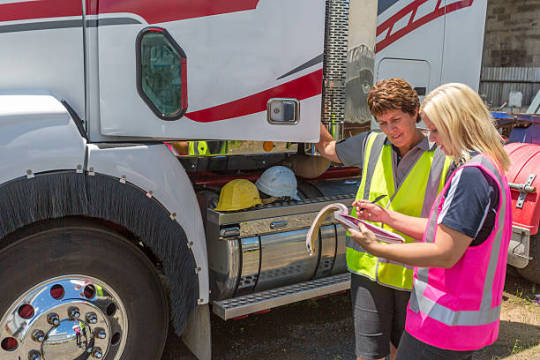
In an era where efficiency and innovation are key, the fuel industry is at the forefront of embracing transformative practices, largely underpinned by modern fuel management systems. Their versatility, suiting both fixed fuel farms and mobile storages, and their impressive efficiency, make them a revolutionary solution. From overfill prevention, tank level monitoring, fluid loss control to fuel-stock condition management, these systems undoubtedly herald a new age of operational excellence in fuel industries.
As we gaze into the future, the potential for advancements in fuel management is exhilarating, promising further enhancements in safety, sustainability, and cost-effectiveness. If you're ready to elevate your fuel operations and navigate towards this promising future, don't hesitate. Contact Banlaw today, a trusted name in fuel management systems, and take the first step towards revolutionising your fuel management practices.
#fuel management system#fuel management software#fuel monitoring#fuel monitoring system#fuel monitoring service
0 notes
Text
Unearthing the Superior Reliability of NBN Phone Systems Over Traditional Landlines
In a world where seamless communication is paramount, the choice of an efficient phone system can make all the difference. As Australia upgrades its telecommunications infrastructure, one question many are asking is whether the modern nbn phone systems are indeed a more reliable option compared to traditional ones.
Evolving from old copper lines to the advanced nbn phone systems comes with a promise of robustness and improved experience in communication. However, this move also brings its own sets of queries and concerns. Are you compromising stability for advancement? Let's delve deeper into the complex realm of telecom and consider whether nbn phone systems truly excels in terms of reliability.

An Understanding of NBN Phone Systems
Often lauded as the future of telecommunications in Australia, the National Broadband Network (nbn) represents a paradigm shift in the way we exchange information. But what makes nbn phone systems stand out? Understanding the mechanics behind them can illuminate their capabilities and how they enhance our communication experience.
At its core, the nbn phone system operates through Voice over Internet Protocol (VoIP). It's a technology that leverages the internet to relay voice communications, replacing the dated copper-wire landlines. VoIP has opened up immense possibilities, such as high-def voice calls, video calls, and the ability to handle multiple calls simultaneously, all while maintaining a crisp connection.
The unique facets of nbn phone systems are manifold. Beyond basic calling features, the system offers advanced call routing, voicemail, caller IDs, and call waiting. Enterprises can delve into more innovative functions, including Auto-Attendant, Call Queues, and virtual numbers. Additionally, the nbn phone systems serve as a cost-effective option, which is particularly useful for businesses. Since VoIP uses an existing internet connection rather than setting up distinct telephone lines, it decreases overall installation and service costs.
Of course, the significant benefit is the flexibility it affords. Users can make or receive calls wherever they have internet access, transforming communication into a truly mobile, adaptable experience. There's also the future-proof factor. As the nbn network develops, it will continue to adapt to emerging technologies, ensuring users aren't left behind in a rapidly evolving digital landscape.
A Look Back at Traditional Phone Systems
Before we immerse ourselves in the world of advanced nbn phone systems, it's crucial to take a step back and appreciate our roots. Traditional phone systems, operating on Public Switched Telephony Networks (PSTN), have served Australia spectacularly well for decades. Time and technological development, however, reveal an inevitable truth: the landscape of communication technology is evolving.
Traditional landline phone systems work via a network of copper wires and telephone exchanges. As romantic and nostalgic as these old systems may sound, they operate on a relatively simple level. A physical line connection is required, allowing you to exclusively make voice calls. Although once considered a pinnacle of communication, the traditional phone system has become the equivalent of travelling by horse and cart in an age of high-speed trains.
The limitations of the traditional system are increasingly apparent in today's digital age. One of the most significant drawbacks is the restriction on mobility. As they're wired systems, moving around while on a call isn't an option unless you stretch the phone cord to its limits! Further, the maintenance of these copper wire infrastructures can be expensive and challenging, particularly in Australia's harsh and vast landscape.
Traditional phone systems are also limited in terms of features and services. Apart from dialling numbers and waiting for someone to pick up the other end, the additional services are slim and often pricey. Factor in weather susceptibility where lines can be brought down by storms and ageing infrastructure, and it's clear they're not the most reliable solution.
Moreover, the audio quality on a traditional phone system pales in comparison with the crystal clear communication offered by digital technology. With businesses now operating globally, this relatively lower voice quality and lack of versatility can be a substantial drawback.
Reflecting on these aspects, it becomes evident why a transition to nbn phone systems is desirable. Traditional phone systems, while precious in our history, might struggle to keep pace with our evolving communication demands. The future, it appears, belongs to high-speed, versatile, and cost-effective network solutions.

NBN VS Traditional Phone Systems
When it comes to phone systems, reliability stands paramount. Both traditional and nbn phone systems have their strengths and challenges, and figuring out which of the two reigns supreme requires more than just a cursory glance.
Traditional phone systems have stood the test of time, demonstrating commendable reliability. They have a separate, dedicated line for each call, which means the quality of one call doesn't affect another. However, these systems are susceptible to physical damages and weather conditions. In terms of service disruptions, a single cut or damage to the copper wires could render a group of telephones useless until repairs are made.
Comparatively, nbn phone systems, operating over the internet, aren’t affected by physical constraints. A significant advantage of nbn is its inherent redundancy—meaning if one network path fails, an alternate path can be used, ensuring continuity of service. This makes the nbn infrastructure generally more robust and reliable. However, its main potential vulnerability comes with dependence on power supply, unlike traditional phone lines which are powered separately.
Now, let's consider a real-life scenario, such as a severe storm. With a traditional phone system, there's a real chance of experiencing downtime due to physical damages to the copper wires. On the contrary, an nbn phone system could still function as usual unless there's a power outage. Even in that scenario, with proper battery backup arrangements, the operation can continue unhindered.
For businesses operating globally, time zones might create a demand for 24/7 communication. With the nbn system, the internet-based services facilitate uninterrupted connectivity, making it an ideal choice. The traditional system, dependent on physical lines and affected by maintenance schedules, might not always offer this luxury.
In essence, while both systems entail their sets of vulnerabilities, the nbn phone system seems to assert a significant edge over traditional phone systems in terms of reliability. This balance might shift more towards nbn as ongoing enhancements aim to address its potential shortcomings, while traditional systems face limitations for improvement. Therefore, contemplating a shift towards nbn can be a prudent move for staying connected in our ever-evolving digital landscape.
Users' Experience: From Copper to Fibre
As Australia charts its path from copper to fibre, users sit at the heart of this transformative journey. Their experiences provide a candid lens by which we can evaluate the transition. The narratives of those who have made the switch from traditional systems to nbn telephony are not merely stories—they are testimonies reflecting the reality of this new technological era.
Jane, a small business owner in Sydney, was initially sceptical about switching over to an nbn phone system. "Like many others, I was comfortable with my old landline. It was familiar and got the job done," she said. However, as her business started to expand, she found the old system wasn’t quite keeping pace. Since making the switch to nbn, Jane testifies an increase in her business's operational efficiency. "The call clarity is fantastic, not to mention the advanced features like call queuing and easy expansion of lines as we grow."
Adelaide's Mark, who runs a stationary store and relies heavily on phone orders, narrates a different experience. Although he acknowledges the superior functionality of the nbn system, he faced some difficulties during the transition. Mark had to navigate through certain technical aspects which he found complex. "You need to properly coordinate with your service provider and plan the switch to prevent any potential business disruptions," says Mark, underlying the importance of strategic planning before undertaking the shift.
For Melbourne based Rita, a retiree who enjoys staying connected with her kids abroad, the upgrade to nbn was led by her children. "I was worried I would not understand the technology and it would be complex," Rita admits. However, to her surprise, she found smooth sailing post the set-up stage. "The call quality is remarkable, and I can even do video calls to see my grandkids," shared a delighted Rita. Her narrative demonstrates that nbn phone systems can cater to all age demographics, offering ease of use and superior connectivity.
Collectively, these narratives do not merely mirror the evolution of technology; they testify to a cultural shift—a willingness to step outside comfort zones and embrace change. They illuminate the dynamic developments that the nbn system brings, from operational efficiency to enhanced connectivity and quality communication. Of course, the journey is not void of challenges, but the long-term benefits of superior, future-proof communications are hard to ignore for both businesses and private users.
The Future of Telecommunication
As we stand on the precipice of a digital revolution, Australia is gearing up to fully embrace the promises that nbn brings. The vision of an extensive, robust and future-proof digital network looms large on our nation's horizon. Let's gaze into the future and speculate on the potential effects of an expanding nbn network on Australia's telecommunication landscape.
Imagine an interconnected Australia powered by the nbn network, a nation where geographical barriers no longer determine the accessibility and quality of communication. This is the reality the nbn network seeks to establish, making unequal access to technology a tale of the past. The broadband network aims to put rural and urban regions on an equal digital footing, promising to bridge the long-standing digital divide.
This would revolutionise the way we communicate, work, and live. The already well-understood impacts of nbn on personal communications are only the first ripple. nbn is poised to re-energise various sectors of Australia's economy. Imagine businesses expanding their operational boundaries, leveraging the versatility and reliability of the nbn to reach customers far and wide. The healthcare sector could utilise the power of high-speed connectivity for telehealth services, making healthcare accessible for more remote communities.
Schools and universities tucked away in rural towns could gain unprecedented access to global educational resources, levelling the educational playing field. And let's not forget about the potential evolution in our entertainment—crystal clear video calls, uninterrupted streaming services, and next-level gaming experiences all thanks to the nbn.

While the rollout is not without its challenges—such as the need for extensive infrastructure development, addressing power-dependency, and navigating through initial consumer hesitancy—the potential it holds is colossal. Even those hurdles, as imposing as they may seem today, could pave the path for further technological innovation and progress.
The nbn isn't just the likely future of telecommunications—it's a key to unlocking Australia's digital potential. It promises to help us redefine our technological landscape, embodying innovation, inclusivity, and progress. And while there are still strides to be made, every step taken towards this all-pervasive, high-speed, and reliable network is a stride towards a more digitally inclusive and connected Australia.
In the expanding realm of telecommunications, the superior reliability, enhanced functionality and flexibility of nbn phone systems render them a clear winner over the traditional landlines. As we progress into an increasingly digital future, it's critical to tap into technological advancements that promise to advance not only our communication capabilities but also the quality of our lives. Embrace the future now. If you're considering upgrading to nbn phone systems, or simply seeking expert insights, don't hesitate to reach out to Network ICT. Their team of specialists are ready to guide you in optimising your communication systems in the era of nbn. Make your shift to seamless communication today with Network ICT. Don't get left behind in the digital revolution; your voice matters, let's make sure it's always heard, loud and clear.
0 notes
Text
Tailoring Your Aluminium Pergola to Complement Your Home's Aesthetic
Indulge yourself in the luxury of outdoor living while simultaneously enhancing the aesthetic appeal of your home. A trend picking up pace in the realms of exterior design - aluminium pergolas, make it completely possible. Elegant and durable, these structures are rapidly becoming the new heart of every modern home, instilling an enchanting radiance to your outdoor space that's hard to ignore.
We will delve into the world of these magnificent aluminium pergolas, their versatility and how readily they can be custom-fit to blend seamlessly with your home's unique style. By the end of our engaging discourse, you will not only understand the immense potential of these structures but also the most befitting ways to tailor them to your home's aesthetic, building an outdoor living space that's both functional and visually inviting.

A Brief Historical Background
Imagine stepping back in time, perhaps while wandering through an ancient Roman garden—the pergola, an architectural marvel, might have captured your attention then, just as it captivates homeowners today. The term 'pergola' is derived from the Latin word 'pergula', which roughly translates to ‘projecting eave’, like those seen on rooftops. These structures had humble beginnings as simple framework structures adorned with trailing vines, often added value to the stately gardens of yore.
As time passed, pergolas established themselves as essential elements of Western landscaping with designs that evolved significantly. Traditionally, these garden features were crafted from wood, which while charming, demanded consistent maintenance and were vulnerable to unfavourable weather conditions over time. This led to the rise of aluminium pergolas, a modern day solution that harmoniously blends form, function and durability, a testament to the progress of architectural design.
Aluminium pergolas come with a power-packed combination of advanced features. They are not only flexible with design, allowing for creativity to flourish, they also present an ideal solution for sustainability, being 100% recyclable. Moreover, compared to their traditional wood counterparts, aluminium pergolas are more resistant to wear and tear, exhibiting immense strength in the face of adverse weather conditions and minimal rusting over time. Coupled with the added advantage of low maintenance requirements, these structures offer both beauty and longevity, emerging as a contemporary favourite among homeowners, designers and architects alike. It's no wonder that the transition from traditional wood to aluminium has become commonplace in today's pergola story.
Customising Design to Match Your Home
Harmonising the aesthetic appeal of your home is similar to fine-tuning an orchestra; all elements should work cohesively to generate a congruous and captivating melody. And just like a piece of music, your abode's exterior requires careful thought and design. In this symphony, aluminium pergolas could very well be the conductor, dictating the rhythm and reigning in the different instrumental strands.
What makes aluminium pergolas the protagonist in this design narrative is their inherent versatility. Sleek lines, clean curves, or ornate latticework – the design possibilities are nearly endless. These structures can effortlessly fit into a diversity of design dynamics, whether your home carries a modern minimalist vibe or exudes a more traditional rustic charm. Choose to add a subtle statement with calming neutrals or a bold contrast using vibrant hues; the personalisation an aluminium pergola offers is virtually limitless.
Designing your aluminium pergola, however, is not solely about aesthetics. This personalised creation needs to align with your home's existing theme, while also delivering on its functional promise. The style of your home, be it Victorian, Colonial, Mid-Century Modern, or others significantly influences your pergola's design. Matching or complementing the colour theme is crucial to achieve visual cohesion.
Location plays a role too. You may want an intimate alfresco dining area, a poolside shade, or a garden centrepiece. And finally, its purpose— whether meant for outdoor entertainment, a peaceful reading nook, or a lush garden retreat— these considerations will shape your pergola’s design. In essence, deliberating over these factors will guide you towards a customised pergola design that harmonises visual appeal, functionality, and individual personality. Remember, it’s about enhancing your outdoor living experience, transforming your area into a harmonious extension of your home's beauty and functionality.

The Steps to Designing Your Own Aluminium Pergola
Imagine the satisfaction of accommodating guests under your uniquely designed aluminium pergola, their acknowledgment of your aesthetic choice serving as a rich embellishment to your social gatherings. To embark on this journey of pergola personalisation, careful planning initiates the process.
The genesis of any great design lies in understanding and narrowing down your specific needs and preferences. Ask yourself, what purpose should your pergola serve? You might aspire for a quiet reading corner, an elegant outdoor dining area or maybe a sheltered space for your plants. Reflect on the aesthetics you prefer. Do you favour a sleek minimalist style, an ornate classical pattern, or something else entirely? Your personal preferences, alongside practical considerations such as size constraints, should guide the initial stages of planning the pergola design.
The next crucial step is coupling your vision with the expertise of a professional designer or an architect. They'll accurately translate your ideas, marrying them with technical knowledge to create a structural design that's both beautiful and functional. During the process, they will offer guidance on design elements while ensuring the pergola seamlessly integrates with the existing architecture of your home.
Simultaneously, material selection and detailing have momentous roles to play in shaping the final result. Aluminium pergolas come with wide-ranging options in terms of colours, finishes, and additional elements like lighting and fabric. Your choices here should aim for aesthetic consistency with your home's exterior, ensuring the pergola doesn’t look misplaced but instead, conforms harmoniously. For instance, a typical contemporary home might benefit from a matte grey pergola with clean profiles, while a rustic-style house might better match a pergola with a wood finish.
By adhering to these carefully curated steps, from initial planning to material selection, you edify your journey towards designing a bespoke aluminium pergola, one that offers the comfort of function while echoing your individuality.
Ensuring Longevity of Your Aluminium Pergola
Once you've successfully tailored your aluminium pergola to blend with your home's aesthetics, the narrative doesn't end there. The spotlight now shifts to preserving the alluring charm of your outdoor companion. How do you ensure that the pergola retains its visual appeal and purpose, becoming a perennial part of your home's story?
Aluminium pergolas, celebrated for their resilience and low maintenance, require some best practices to maintain their aesthetic appeal and functionality. Thankfully, this isn't an uphill climb. Regularly cleaning your pergola with soapy water and a soft-bristle brush can work wonders in preventing dust and debris accumulation. For those placed near trees or shrubs, it's crucial to check and remove any leaves or twigs that might clutter the rooftop and attract pests, thus helping maintain its visual appeal.
The functionality of your pergola can be retained effectively by ensuring a periodic check of its structural integrity. Tighten any loose screws, replace any worn-out components, and make sure all the moving parts, if any, are properly lubricated. Moreover, treating the pergola with a UV-resistant topcoat can protect its colour from fading under the sun and maintain its look over the years.
Despite taking due care, aluminium pergolas, like any other structure, may come across some common challenges. You may notice chipping paint, minor dents or scratches due to harsh weather or accidental hits. Instead of letting these minor setbacks erode the beauty of your pergola, manage them with timely repairs. Small areas of paint damage can be fixed with a simple touch-up, while dents and scratches can often be repaired without professional help.
Remember, the integrity and durability of your aluminium pergola largely rely on your attentive care. By making maintenance a regular part of your routine, and tackling common challenges proactively, you can ensure your pergola remains an enduring, captivating addition to your home, firmly standing the test of time.
The Aesthetic Harmony Between Home and Pergola
As we find our narrative nearing its end, it's evident that the importance of aesthetic harmony between your home and your aluminium pergola cannot be overstated. A well-crafted, aesthetically attuned pergola acts as a visual extension of your home, creating a harmonious flow from one space to another. More than mere structures, pergolas become symbolic of your personality and style, adding an exceptional character to your abode.
Embarking on this design journey with aluminium pergolas opens an avenue for creativity. With a wealth of design possibilities, these structures offer incredible flexibility to meet a multitude of needs, from providing a charming retreat to hosting lively social gatherings. Equipped with the knowledge on how to tailor aluminium pergolas to align perfectly with your home's aesthetics, you're ready to bring this stunning vision into reality.
It's important to recall that the journey extends beyond installation, with a need for careful maintenance to uphold the borne elegance. By employing best practices and dealing responsibly with any potential wear and tear, your pergola's aesthetic appeal and functionality remain unscathed, ready to serve your leisurely pursuits.
As we close, it's worth noting that aluminium pergolas embody more than functionality—they become a testament to personal creativity, architectural aesthetics and sustainable choice. So, as you consider mirroring your home's aesthetics in your pergola's design, remember you're crafting a visual story, one that's echoed every time eyes set sight on your aluminium marvel.

Ultimately, the endeavour to design an aluminium pergola that harmonises with your home's style is a creative exploration that delivers immense satisfaction—a unique opportunity to fashion an inspiring outdoor space that speaks to your vision and resonates personally with you. Take a confident stride into this wonderful opportunity to blend functionality, aesthetics, and ingenuity, rendering your home even more distinctive and captivating. Harmonising your aluminium pergola and home aesthetics is an artistic endeavour and a worthy investment, striking a balance between functionality and visual appeal. Mastering this art brings unforgettable charm and usefulness to your exterior spaces. As you take your first steps towards realising this exterior transformation, HV Aluminium awaits your call. Our team of experts is eager to assist you in developing a tailored design that weaves into your existing architecture seamlessly and caters to all your pergola needs. Don't wait to create your dream outdoor living space. Reach out to HV Aluminium today, let us transform your vision into a captivating reality.
0 notes
Text
The Transformation of Tanzania's Luxury Safari Experience Amid COVID-19
When someone mentions a luxury Tanzanian safari tour, images of majestic wildlife, endless savannahs, and breathtaking sunsets come to mind. For decades, visitors have been drawn to this exciting and unique travel experience, lavishing in the immersive splendour and luxury of Tanzania's diverse wildlife. Nevertheless, the unexpected spread of COVID-19 across the globe prompted an unprecedented transformation in the world of travel and exploration, forcing us to redefine what luxury and safari mean in the wake of a global pandemic.
The impact of COVID-19 has swept across all sectors of global tourism, and the luxury Tanzanian safari tour industry is no exception. Yet, as one landscape subdues, another arises. Today, against the backdrop of a world grappling with change, Tanzania's luxury safari industry has proven its resilience and adaptability. From implementing new health and safety procedures to redefining the very essence of luxury travel, the industry has precisely catered to evolving traveller expectations. What stands before us now is a transformed safari experience, holding promise for a bold and thrilling new chapter in Tanzanian luxury tours.

The Pre-COVID Tanzania Luxury Safari Experience
Unveiling an untouched Eden, the signature Tanzanian safari beckoned global travel connoisseurs to its natural wonder. A memorable traversal through the sprawling plains of the Serengeti, squinting against the golden sunset while the "Big Five'' roamed freely, was just part one of this grand spectacle. Then there were the luxury tented camps under the starlit African sky, an intimate rendezvous with vast savannas and high-end service that bolstered the appeal. This was the hallmark of a typical luxury Tanzanian safari experience - a first-hand exploration of nature, tinged with an unmatched, elegant adventurers' comfort.
Before the pandemic, Tanzania’s luxury safaris were a prominent jewel in the crown of global travel destinations. According to Tanzania Tourism's official reports, visitor arrivals had reached 1.5 million in 2019, marking a remarkable 3.8% growth from the previous year. Safari tourism, being a significant part of this, fueled Tanzania's thriving tourism sector, contributing substantially to the country's Gross Domestic Product. The sector was projected to continue its upward trajectory, as visitor influx steadily increased year after year.
The financial implications of this sector were monumental on Tanzania's economy as it boosted local businesses and created numerous employment opportunities, particularly in the hospitality industry. The safari tourism industry also played an instrumental role in supporting conservation efforts across the country, with a large portion of park fees going towards maintaining the integrity of Tanzania's national parks and reserves. All in all, the glory days of the pre-COVID Tanzanian luxury safari were marked by staggering growth, invaluable economic contribution, and a proud heritage of conservation. This dazzling epoch seemed unstoppable... until an unexpected force swept across the globe, challenging every norm.
The Arrival of COVID-19 and Initial Impact
The winds of change began to blow early in 2020 with the ominous spread of the novel coronavirus. As countries closed their borders and travel came to a sudden halt, Tanzania, too, grappled with containment measures. In an effort to curb the virus's spread, the government implemented stringent health and safety guidelines, imposing a suspension on international flights and enforcing strict entry guidelines. Local businesses immediately adhered to measures aimed at limiting close person-to-person contact, utterly disrupting the business-as-usual model for the Tanzanian luxury safari industry.
In the blink of an eye, the bustling plains of Serengeti fell quiet as visitor arrivals plummeted. The luxury safari tour industry, which heavily relied on international tourists, felt the sting of the pandemic almost overnight. Tent cities, which once twinkled underneath the starlit African skies, closed their flaps to the outside world, turning silent and empty. Revenue streams dried up as cancellations soared, casting a gloomy shadow over the industry that contributed significantly to Tanzania's economy.
The cascading effect of the pandemic-induced standstill had industry stakeholders in a state of high alert. Their reactions ranged from sheer disbelief to quick adaptation. While hoteliers and tour operators scrambled to manage cancellations and refund requests, guides and staff were faced with an unanticipated hiatus. Conservation initiatives, nurtured by the steady income from the luxury safaris, grappled with the immediate financial shortfall. Nonetheless, the overriding sentiment was one of resilience and the resolve to adapt with the times. Everyone was poised for action, eager to preserve the legacy of the Tanzanian luxury safari in a world abruptly transformed by a pandemic.

Adapting to a New Normal
In the face of adversity, the luxury Tanzanian safari industry proved its resilience and adaptability. Seizing the reins, it began to unravel a playbook for navigation in this new world order. One of the first aspects to undergo a transformation was health and safety protocols within the safari circuits. Touchless check-ins, frequent sanitization, lower tour vehicle capacities and strict enforcement of mask usage became the new norm on the dirt trails of Serengeti and beyond. Tanzania's Ministry of Natural Resources and Tourism developed comprehensive guidelines, prioritising visitor safety without compromising the exotic safari experience.
Simultaneously, service delivery began to adapt to this altered landscape. Luxury accommodations took on a more secluded and personalised form, offering private villas or tents over multitudinous lodges. Adventure itineraries became more tailored, focusing on more intimate encounters with nature to compensate for any standard amenities that had to be subdued due to safety concerns. Rather than the erstwhile buffet-style dining, personalised culinary experiences emerged as appealing alternatives, ensuring safety without compromising the flavour of safari luxury.
The industry’s determination to adapt and innovate was met with a wave of positive feedback from the first wave of post-pandemic adventurers. Despite initial apprehensions, these travellers extolled the new and improved safety protocols and service modifications. Their reviews painted the picture of a luxury Tanzanian safari tour traced with an added layer of exclusivity and personal attention, all borne from the imperative adaptations in these unusual times. This renewed enthusiasm among travellers has bolstered the confidence of the industry stakeholders, proving that the Tanzanian safari experience, albeit transformed, has not lost its allure.
Redefining Luxury in the Midst of a Pandemic
In the uniquely challenging environment of a global pandemic, the paradigm of luxury took dynamic and unexpected turns. Navigating through the murky waters of change, travellers' demands began to morph and evolve. Far from the crowded, hustle-bustle of typical tourist attractions, they began seeking experiences that offered seclusion, serenity, and most importantly, safety. This shift in preference berthed a novel breed of adventurers – those who longed for the wild grandeur of a Tanzanian safari yet yearned for the assurance of robust health protocols.
Catering to this new blend of desires, the Tanzanian luxury safari industry pivoted towards redefining the very norms that set the rhythm of their opulent ventures into the wild. Smaller groups, private tours, and a keen emphasis on cleanliness, hygiene and guest safety began to take centre stage. The typical crowded game drives and shared safari resorts morphed into intimate encounters with nature, sequestered in the embrace of isolated luxury lodges and tented camps.
This emergent affinity towards personalised yet secure experiences has given rise to new trends within the industry. Luxurious and sanitised private charters now whisk voyagers to untouched wildlife arenas, minimising public interactions. A trend towards longer stays at these refurbished wildlife abodes has also taken root, expanding the scope for immersion and exploration.
Hotels and camps have stepped up their game as well, investing in sophisticated health technology, and offering tempting gourmet alternatives to buffet meals - such as 'room service in the wild' or customised open-air dining experiences. The luxury safari experience has hence been imbued with an enhanced sense of exclusivity, personalised attention, and mindful safety considerations that were not typical pre-pandemic offerings.
In essence, the Tanzanian luxury safari industry's ability to adapt and redefine elegance amidst a pandemic has not only been remarkable, but also instrumental in bridging the gap between the ever enchanting call of the wild and the new-age traveller's evolved expectations. The industry has shown remarkable agility and resilience, redefining the post-pandemic luxury tourism landscape as a wedlock of safety conscious alterations and unrestrained opulence.
Sustainability and Resilience in Tanzanian Safari Tours
As Tanzania’s luxury safari industry journeys through the aftermath of the global health crisis, invaluable lessons have been sculpted that could very well map out its future course. Unquestionably, the element of unpredictability has been underscored, revealing the urgency to have dynamic, adaptable business models that can weather unforeseen blows. The industry also witnessed the evolving preferences of travellers seeking not just luxury, but also safety, exclusivity, and engagement with nature on a much deeper level.
Guided by these insights and lessons, the industry is pivoting towards sustainable business practices geared to ensure long-term prosperity. Emphasis on environmental stewardship has grown, aligning more closely with global trends promoting ecotourism. Beyond mere economic considerations, luxury safari operators are showing heightened involvement in local community development and wildlife conservation, understanding that the true value of their offering lies in the preservation of the pristine Tanzanian landscapes and diverse wildlife populations.
Innovative technologies have begun to seamlessly weave into operations of the luxury safari tours, acting as a catalyst for resilience. Digital technologies, for instance, are transforming bookings, communications, and even virtual wildlife experiences. Health technologies, like touchless check-ins, health monitoring, and advanced sanitization procedures are being adopted enthusiastically. Even green technologies are finding a place, with several outfits turning to renewable energy and waste management systems, making the luxurious safari experience more eco-friendly.
The exploration of integrating augmented or virtual reality into the safari experience is also promising, offering guests a new level of immersion and education, and a unique selling point. Hence, technology and innovation are no longer additional benefits, but they are becoming the foundation stones of a resilient and sustainably run luxury safari experience.

Looking towards the future, the Tanzanian luxury safari industry stands armed with the wisdom of the past and the strategies for a sustainable, resilient future. The ability of the industry to realign the safari experience with changing global realities is more than praiseworthy, it is inspirational. The relentless spirit of innovation, dedication to sustainability, and a clear vision for the future guarantee that the intrigue of the Tanzanian luxury safari will continue to lure adventurers from corners of the globe, delivering an experience that stands the test of time.
The saga of Tanzania's luxury safari industry, from the vast Savannahs to redefined Sanctuaries, is a testament to the resilience and adaptability of the human spirit. Amid the seismic shake of the global pandemic, Tanzania has orchestrated a captivating transformation. Adapting with the times, evolving to meet the travellers' changing wants and needs, innovating for better efficiency and sustainability, the Tanzanian safari industry continues to shine through as a beacon of hope and development - a model for the world. Whether you wish to embark on a unique adventure, or long to rediscover what luxury safari feels like in a post-pandemic world, contact Destinations Africa. They promise you an unforgettable journey into Tanzania – redefined, resilient, and resplendent, embodying the natural wonder of Africa, the elegance of luxury, and the spirit of wilderness.
0 notes
Text
Exploring the Hidden Hazards of Asbestos Lurking in Your Home
When it comes to the safety of our homes, we often think about protecting our loved ones from visible dangers like burglaries or accidents. However, there's a lurking menace that remains largely invisible to the naked eye—asbestos. This notorious mineral, once widely used in construction materials for its fire-resistant properties, poses significant health risks if disturbed or deteriorating. In this article, we delve into the potential hazards associated with asbestos in residential settings, shedding light on the importance of an asbestos inspection report and the measures you can take to safeguard your home and family.
As you sip your morning coffee or relax in your cosy living room, you might be oblivious to the fact that your home could be harbouring asbestos, silently threatening your well-being. Asbestos fibres, when released into the air due to damage or degradation of asbestos-containing materials, can be inhaled and lead to severe respiratory illnesses, including mesothelioma and lung cancer. Identifying the presence of this hazardous substance requires a comprehensive asbestos inspection report, conducted by trained professionals who meticulously examine various areas of your home. By understanding the potential risks and acting proactively, you can mitigate the dangers associated with asbestos, ensuring a safer environment for everyone within your household.
Understanding Asbestos
Asbestos, a naturally occurring mineral composed of thin, fibrous crystals, has been used for centuries due to its desirable properties. Its resistance to heat, fire, and electricity made it a popular choice in various industries, including construction. However, it wasn't until the 20th century that the health risks associated with asbestos exposure started to emerge.
Asbestos fibres are incredibly durable and resistant to chemical degradation. They are divided into two main categories: serpentine and amphibole. Chrysotile, a serpentine form, accounts for about 90% of the asbestos used globally. Amphibole asbestos includes various types like amosite, crocidolite, tremolite, anthophyllite, and actinolite. These microscopic fibres, when released into the air, can be inhaled and cause significant health problems.
Historically, asbestos found its way into countless construction materials due to its versatility and affordability. It was widely used in insulation, roofing materials, flooring, cement products, and even household appliances. Its fire-resistant properties made it particularly appealing in buildings, ships, and industrial facilities. Unfortunately, the widespread use of asbestos during the 20th century means that many older homes may still harbour these hazardous materials today.
Understanding the presence of asbestos in your home is crucial, as it can pose serious health risks if disturbed or deteriorating. Asbestos-containing materials (ACMs) may not always be visible to the naked eye, making it challenging to identify them without proper inspection. The next section explores the potential health risks associated with asbestos exposure, shedding light on the importance of proactive measures to protect yourself and your loved ones.
Health Risks Associated with Asbestos
Exposure to asbestos fibres can have severe consequences for human health, particularly in the respiratory system. When asbestos-containing materials are damaged or disturbed, microscopic fibres are released into the air and can be inhaled. Over time, these fibres can accumulate in the lungs and other organs, leading to various respiratory diseases.
One of the most devastating conditions linked to asbestos exposure is mesothelioma, a rare and aggressive cancer that affects the lining of the lungs, abdomen, or heart. Mesothelioma has a long latency period, often taking several decades to develop after initial exposure to asbestos. Unfortunately, this means that individuals may not experience symptoms until the disease has reached an advanced stage, making treatment more challenging.
In addition to mesothelioma, asbestos exposure has been strongly linked to the development of lung cancer. The inhalation of asbestos fibres can cause genetic damage to lung cells, leading to the formation of malignant tumours. Smoking in combination with asbestos exposure significantly increases the risk of developing lung cancer, making it crucial for individuals exposed to asbestos to quit smoking and seek regular medical check-ups.
Apart from mesothelioma and lung cancer, prolonged asbestos exposure can also result in other respiratory diseases such as asbestosis and pleural plaques. Asbestosis is a chronic lung condition characterised by scarring and inflammation, leading to breathing difficulties and reduced lung function. Pleural plaques are non-cancerous abnormalities that form on the lining of the lungs and chest wall, causing discomfort and potential complications.
Common Areas for Asbestos Contamination
Asbestos can lurk in various areas of your home, often hidden in plain sight. Being aware of these common areas of asbestos contamination is crucial for identifying potential risks and taking necessary precautions.
One area where asbestos is frequently found is in attic and wall insulation. Older homes built before the 1980s often used asbestos-containing insulation materials, such as loose-fill insulation or vermiculite insulation. These materials, when disturbed during renovations or through natural wear and tear, can release asbestos fibres into the air, posing a significant health hazard.
Flooring and ceiling tiles are another potential source of asbestos contamination. Vinyl floor tiles, linoleum, and certain types of adhesives used in flooring installation may contain asbestos. Similarly, ceiling tiles, especially those manufactured prior to the 1980s, often contain asbestos fibres. It is important to exercise caution when removing or replacing these materials to avoid fibre release and subsequent exposure.
Roofing materials can also be a hidden source of asbestos in residential buildings. Asbestos cement roofing sheets or shingles were commonly used for their durability and fire-resistant properties. Over time, weathering and deterioration of these materials can result in the release of asbestos fibres. Regular inspections and proper maintenance of roofing structures are essential to prevent potential contamination.
Pipes and ductwork are often overlooked areas where asbestos can be present. Asbestos insulation was commonly used to wrap pipes and line heating ducts, providing thermal insulation and fire protection. Damaged or deteriorating insulation can release asbestos fibres into the air, which can be easily inhaled. Proper assessment and professional handling of asbestos-insulated pipes and ductwork are crucial to minimise the risk of exposure.
Managing Asbestos in Your Home
When it comes to managing asbestos in your home, understanding your options and taking appropriate steps is crucial to protect yourself and your loved ones from the potential health risks associated with asbestos exposure.
If asbestos-containing materials (ACMs) are in good condition and undisturbed, leaving them untouched may be the safest approach. However, if you plan to renovate, remodel, or make repairs that may disturb these materials, it is essential to consider the options for handling and removing ACMs. One option is encapsulation, where a specialised sealant is applied to encapsulate the asbestos fibres and prevent them from being released. Encapsulation can be a cost-effective method, particularly for areas with minimal damage or contamination.
In some cases, removal of ACMs may be necessary, especially when they are severely damaged or deteriorating. However, asbestos removal should always be performed by licensed professionals with expertise in asbestos abatement. Professional asbestos abatement ensures proper containment, removal, and disposal of asbestos materials, minimising the risk of fibre release and ensuring the safety of everyone involved.
It is important to note that asbestos removal is subject to specific legal requirements and regulations to protect public health and the environment. These regulations vary by jurisdiction, and it is essential to comply with them to avoid potential penalties and ensure the safe handling of asbestos. Hiring a licensed asbestos abatement contractor not only ensures compliance with these regulations but also provides peace of mind knowing that the removal is conducted according to industry standards and best practices.
Taking proactive steps to manage asbestos in your home is crucial for creating a safe living environment. Whether it's encapsulation or professional removal, it is recommended to consult with asbestos experts to assess the condition of ACMs and determine the most appropriate course of action. By adhering to legal requirements and regulations, you can effectively mitigate the risks associated with asbestos and promote a healthier home environment for you and your family.
Preventive Measures and Safety Precautions
Preventing asbestos-related risks in your home involves adopting proactive measures and adhering to essential safety precautions. By maintaining and monitoring asbestos-containing materials (ACMs), educating yourself and your family about asbestos safety, and seeking professional advice for renovations or repairs, you can significantly reduce the potential hazards associated with asbestos exposure.
Regular maintenance and monitoring of ACMs are crucial to prevent fibre release and maintain a safe living environment. Ensure that ACMs, such as insulation or roofing materials, are in good condition and not damaged or deteriorating. If you notice any signs of wear or damage, seek professional advice on the best course of action. Additionally, it's important to avoid activities that may disturb ACMs, such as drilling, cutting, or sanding, without proper precautions.
Educating yourself and your family about asbestos safety is essential for raising awareness and minimising the risk of exposure. Familiarise yourself with common asbestos-containing materials and their potential locations in your home. Teach your family members to recognize warning signs of asbestos and the importance of not disturbing or tampering with suspect materials. Promote good hygiene practices, such as washing hands after handling potentially contaminated materials, to reduce the chance of inadvertent fibre ingestion.
When planning renovations or repairs that may involve ACMs, it is wise to seek professional advice and guidance. Consulting with licensed asbestos professionals can help you assess the presence of asbestos, determine the appropriate precautions, and develop a safe approach for the project. They have the expertise and necessary equipment to handle ACMs safely, minimising the risk of fibre release and exposure to you and the workers involved.
0 notes
Text
Exploring the Possibilities of Brochure Printing Options
Brochures have long been a popular marketing tool for businesses and organisations seeking to effectively convey their message and engage with their target audience. In today's digital age, where online advertising dominates the marketing landscape, brochures remain a tangible and versatile medium that offers a unique opportunity to captivate and connect with potential customers. However, to make a lasting impression, it is essential to explore the possibilities of brochure printing options that go beyond the standard template designs. This article delves into the diverse range of brochure printing options available, shedding light on innovative techniques, materials, and finishes that can elevate the visual appeal and impact of your promotional materials.

From vibrant colour schemes and intricate designs to luxurious textures and captivating finishes, brochure printing options have evolved to cater to a wide array of creative preferences. By carefully selecting the right combination of printing techniques and materials, businesses can effectively convey their brand identity, differentiate themselves from competitors, and leave a memorable impression on their target audience. In this article, we will explore the various possibilities, such as offset printing, digital printing, and specialty finishes like embossing and spot UV coating, providing insights into how each option can enhance the overall look and feel of your brochures. Whether you're aiming for a sleek and modern aesthetic or a rustic and tactile appeal, understanding these brochure printing options will empower you to create visually striking marketing collateral that effectively communicates your message and drives engagement.
Understanding Different Types of Brochure Printing
Brochures serve as powerful marketing tools, allowing businesses and organisations to communicate their message effectively to potential customers. While the digital age has ushered in new advertising avenues, the tactile nature of brochures continues to captivate audiences and leave a lasting impression. One of the key factors that contribute to the success of a brochure is the selection of appropriate printing options. By exploring the possibilities of brochure printing techniques and finishes, businesses can enhance the visual appeal and overall impact of their promotional materials.
Printing techniques play a crucial role in determining the quality and clarity of the brochure's design. Offset printing, a popular choice for high-quality brochures, utilises a combination of plates, ink, and rollers to transfer the image onto the paper. This technique ensures accurate colour reproduction, sharp details, and consistent results. On the other hand, digital printing offers flexibility and cost-effectiveness, making it suitable for short print runs or personalised brochures. It allows for quick turnaround times and the ability to make on-demand edits. Understanding these printing techniques enables businesses to choose the option that aligns with their specific requirements and budget.
In addition to printing techniques, the choice of finishes can greatly enhance the visual and tactile experience of a brochure. Embossing, for instance, creates raised areas on the paper, adding texture and depth to the design. This technique is particularly effective in highlighting logos, titles, or other key elements. Spot UV coating is another popular finish that involves applying a glossy varnish to specific areas of the brochure. This creates a contrast between the coated and uncoated sections, resulting in a visually striking effect. Other finishes, such as foil stamping and die-cutting, offer unique ways to elevate the brochure's aesthetics and make it stand out.
Unleashing Creativity: Glossy and Matte Finishes
The Allure of Glossy Finish
A glossy finish is a popular choice for brochures as it offers a range of benefits and characteristics that enhance the visual appeal and impact of the design. One of the main advantages of a glossy finish is its ability to create a smooth and polished surface, resulting in vibrant colours and sharp images. The glossy coating reflects light, adding a sheen that makes the brochure appear more attractive and professional. This finish is particularly effective for brochures that aim to convey a sense of sophistication and luxury.
The glossy finish is ideal for various scenarios where you want to make a strong visual impact. It works exceptionally well for brochures showcasing high-quality products or services, such as luxury brands, real estate properties, or high-end travel destinations. The glossy coating can make product images or photographs appear more vibrant and lifelike, capturing the attention of the reader and leaving a lasting impression. Additionally, glossy finishes are well-suited for brochures that seek to convey a sense of modernity and sleekness, making them a great choice for technology companies or innovative startups.
To maximise the impact of a glossy finish in brochures, it's important to keep a few tips in mind. First, ensure that the design elements you want to highlight, such as product images, logos, or headlines, are strategically placed in areas where the light will reflect off the glossy surface, drawing attention to those key features. Contrast can also be utilised effectively by combining a glossy finish with matte or uncoated sections, creating visual interest and emphasising important content. Another tip is to choose the right paper stock for the brochure. Opting for a heavier-weight paper with a coated surface will provide a sturdier and more substantial feel to the brochure, complementing the glossy finish.
Embracing Subtlety: Matte Finish
A matte finish is a popular choice for brochures due to its unique advantages and distinctive features that can enhance the overall look and feel of the design. One of the main characteristics of a matte finish is its non-reflective nature, which gives the brochure a sophisticated and elegant appearance. Unlike glossy finishes, matte finishes create a soft and velvety texture that adds a tactile element to the brochure, making it visually appealing and inviting to touch. Additionally, matte finishes are excellent at reducing glare and fingerprint visibility, ensuring that the brochure remains easy to read and handle.
The matte finish is well-suited for a variety of applications in brochure design. It is particularly effective for conveying a sense of understated luxury and professionalism. Businesses or organisations that aim to showcase refined and classic aesthetics, such as high-end fashion brands, upscale hotels, or exclusive event venues, can benefit from the elegant simplicity that a matte finish offers. Moreover, matte finishes are ideal for brochures that require a focus on text-heavy content, as the non-reflective surface ensures excellent readability and prevents distractions from lighting or glare.
To utilise the matte finish effectively in brochure design, consider the following tips. Firstly, capitalise on the contrast between matte and glossy elements. Combining a matte finish with spot gloss or UV coating on specific design elements can create a visually striking effect and draw attention to important features. Secondly, pay attention to paper selection. Opt for a heavier, high-quality matte paper stock to enhance the tactile experience and give the brochure a premium feel. Additionally, use the matte finish strategically to highlight key content, such as headlines, subheadings, or call-to-action sections. The subdued elegance of the matte finish can help guide the reader's focus and create visual hierarchy.

Beyond Glossy and Matte: Exploring Other Finishing Options
Spot UV Coating
Spot UV coating is a printing technique that involves applying a glossy and raised coating to specific areas of a printed piece. It creates a striking contrast between the coated and uncoated sections, resulting in a visually appealing effect that can elevate the overall design of a brochure. Spot UV coating not only adds a tactile element to the brochure but also enhances the visual impact by drawing attention to specific elements.
Spot UV coating can be used to enhance various elements in a brochure design. Logos, images, or important text can be selectively coated to create a glossy and raised effect, making them stand out from the rest of the design. This technique is particularly effective for adding depth and dimension to the brochure, giving it a luxurious and high-end appearance. By selectively coating elements, businesses can create focal points that capture the reader's attention and guide their eyes towards the most important information.
Examples of how spot UV coating can elevate brochure design are numerous. For instance, in a brochure for a high-end jewellery brand, spot UV coating can be used to highlight the diamonds or gemstones in the product images, creating a brilliant and eye-catching effect. In a travel brochure, spot UV coating can be applied to landmarks or iconic destinations, making them visually striking and enticing. In a brochure for a tech gadget, spot UV coating can be used to enhance the buttons or screen, giving a tactile and premium feel to the design. These examples demonstrate how spot UV coating can be employed creatively to elevate specific elements in a brochure and make them more visually impactful.
Foil Stamping
Foil stamping is a printing technique that adds a touch of elegance and luxury to brochures by applying metallic or pigmented foils to specific areas of the design. It creates a visually striking effect that catches the light and captivates the viewer's attention. Foil stamping can elevate the overall aesthetic of a brochure, making it appear more sophisticated and premium.
The visual impact of foil stamping is unparalleled. The metallic or pigmented foils, available in a range of colours and finishes, create a reflective and shimmering effect that adds depth and dimension to the design. Whether it's a gold foil for a sense of opulence, a silver foil for a sleek and modern look, or a holographic foil for a captivating and eye-catching effect, foil stamping offers endless possibilities to enhance the visual appeal of a brochure.
Foil stamping is particularly effective for brochures that aim to convey elegance and luxury. It can be used to accentuate key elements such as logos, titles, borders, or specific design details. By strategically incorporating foil stamping, businesses can create a sense of exclusivity and allure, making the brochure more memorable and impactful. Whether it's a high-end fashion brand, a premium spa or wellness centre, or a luxury real estate development, foil stamping adds a level of sophistication that resonates with discerning customers.
Successful implementations of foil stamping in brochures are abundant. For instance, a high-end fashion brand may use gold foil stamping on its logo or brand name to communicate a sense of luxury and prestige. In a brochure for a luxury resort or hotel, silver or copper foil stamping can be applied to highlight the property's iconic features, such as swimming pools or architectural details. For an exclusive event or product launch, holographic foil stamping can create a mesmerising and memorable effect. These examples illustrate how foil stamping can be used creatively to enhance brochure design and evoke the desired emotions in the target audience.
Embossing and Debossing
Embossing and debossing are printing techniques that create tactile effects in brochure design, adding depth and texture to the printed surface. Embossing involves raising certain elements of the design, while debossing creates a depressed or indented effect. Both techniques offer a visually appealing and interactive experience for the viewer, making brochures more engaging and memorable.
The tactile effects of embossing and debossing are remarkable. When a brochure is embossed, specific areas of the design are raised, resulting in a three-dimensional effect. This technique adds a tactile element that invites the viewer to touch and feel the raised elements. On the other hand, debossing creates a depressed or indented effect by pressing certain areas of the design into the paper. This technique offers a unique and intriguing texture that can evoke a sense of elegance or craftsmanship.
Creating depth and texture in brochure design through embossing and debossing enhances the overall visual impact. These techniques can be used to highlight key elements such as logos, titles, or intricate patterns. By selectively embossing or debossing specific design elements, businesses can add a level of sophistication and luxury to their brochures. The tactile effects create a multisensory experience that captures the attention and leaves a lasting impression on the viewer.
Inspiring examples of embossed and debossed brochures can be found across various industries. For instance, in a brochure for a high-end stationary brand, embossing can be applied to showcase the intricate details of the product, such as raised patterns or textures. In a brochure for a luxury spa or wellness centre, debossing can create a serene and calming effect by adding a subtle, tactile texture to the design. Embossing and debossing can also be combined with other printing techniques, such as foil stamping or spot UV coating, to create visually striking and immersive brochures that effectively communicate the brand's identity.
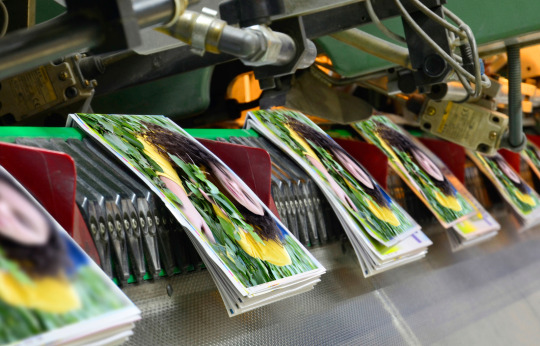
In conclusion, the possibilities of brochure printing options are vast and offer a range of creative opportunities to enhance the visual impact and effectiveness of your marketing materials. Whether it's choosing between glossy or matte finishes, incorporating spot UV coating or foil stamping, or exploring the tactile effects of embossing and debossing, each technique has its unique advantages and characteristics that can elevate your brochure design. By carefully considering your brand identity, target audience, and desired messaging, you can make informed choices that align with your marketing objectives and create brochures that truly stand out. If you're ready to bring your brochure design to life and explore the endless possibilities of printing options, don't hesitate to contact Jennings Print today for expert guidance and exceptional printing services. Let your brochures become a powerful tool in conveying your message and capturing the attention of your audience.
0 notes
Text
Understanding the Regulations and Standards for Industrial Safety Product
Industrial safety is a crucial aspect of any manufacturing or production process. In today's modern and fast-paced world, there are a wide range of safety products available that aim to minimise the risks associated with industrial operations. However, for these products to be effective, they must adhere to strict regulations and standards. Understanding these regulations and standards is essential for anyone involved in the design, manufacture, or implementation of industrial safety products.

This article aims to provide a comprehensive overview of the regulations and standards that govern industrial safety products. It will cover the main organisations responsible for creating and enforcing these regulations, as well as the key standards that industrial safety products must adhere to. By understanding these regulations and standards, manufacturers and users of industrial safety products will be able to ensure that their products are both effective and compliant with the latest safety requirements.
Compliance with Australian Safety Standards
Industrial safety products are crucial in preventing accidents and injuries in the workplace. However, for these products to be effective, they must meet certain regulations and standards set by the Australian government. The Australian Standards are a set of guidelines that outline the minimum safety requirements for various products and services, including industrial safety products. Compliance with these standards is essential for manufacturers and users of industrial safety products.
The Australian government has established various regulatory bodies responsible for enforcing safety regulations in the workplace. One such body is Safe Work Australia, which is responsible for developing and maintaining national policy and guidelines for workplace safety. Safe Work Australia provides guidelines for the design and implementation of industrial safety products, as well as for their maintenance and testing. Compliance with these guidelines is mandatory for all manufacturers and suppliers of industrial safety products in Australia.
In addition to Safe Work Australia, other regulatory bodies such as WorkSafe Victoria and the Work Health and Safety Regulator in New South Wales are responsible for enforcing safety regulations in their respective states. Manufacturers and suppliers of industrial safety products must comply with the regulations and standards set by these bodies to ensure their products meet the required safety standards. Failure to comply with these regulations can result in penalties, fines or legal action.
Employers have a legal obligation to ensure the safety of their employees in the workplace. This includes complying with Australian safety standards for industrial safety products. Failure to comply with these standards can result in serious accidents, injuries, or even fatalities. To ensure compliance with Australian safety standards, employers must take a proactive approach to workplace safety.
The first step for employers is to identify potential hazards in the workplace and assess the risks associated with them. Once these risks are identified, employers must take steps to eliminate or minimise them. This may involve the use of industrial safety products such as personal protective equipment, guardrails, or safety harnesses. It is important to ensure that these products meet Australian safety standards and are used correctly by employees.
Employers must also ensure that their employees are adequately trained in the use of industrial safety products. This includes training on how to properly use, maintain and store these products. Employers should provide clear instructions and guidelines for the use of industrial safety products and ensure that employees understand the importance of compliance with Australian safety standards.
Regular inspections and maintenance of industrial safety products are also essential to ensure compliance with Australian safety standards. Employers should establish a system for regular inspections and maintenance of industrial safety products, and keep accurate records of these activities. This will help to identify any defects or issues with the products and ensure that they are repaired or replaced in a timely manner.
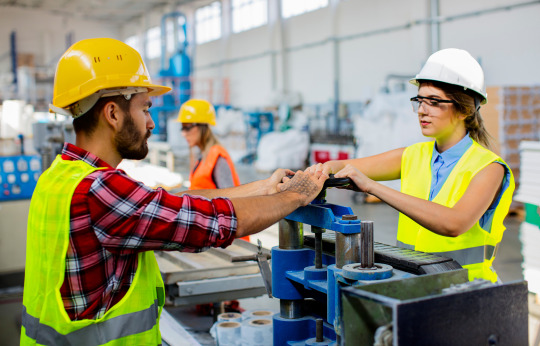
Choosing the Right Industrial Safety Products
Choosing the right industrial safety products is essential to ensure the safety of workers in the workplace. With so many options available, it can be overwhelming to determine which products are best suited for a particular job or task. To help make an informed decision, there are several factors that should be considered when choosing industrial safety products.
Different industrial safety products are designed to protect against specific hazards, such as falls, chemical exposure, or electrical hazards. Identifying the hazards present in the workplace can help narrow down the options for industrial safety products. Some jobs may require minimal protection, while others may require more comprehensive protection. For example, a worker performing a task at height may only require a basic harness, while a worker performing a high-risk task may require a full body harness with additional safety features.
Workers may be less likely to use a safety product that is uncomfortable or limits their mobility, which can compromise their safety. Choosing industrial safety products that are both effective and comfortable can help ensure that workers are willing to use them. Industrial safety products must meet strict safety standards set by the Australian government to ensure their effectiveness. It is important to choose products that comply with these standards to ensure the safety of workers and avoid legal penalties.
Budget is a critical consideration when selecting industrial safety products. Employers must ensure that they are selecting products that are both effective and affordable. While cost should not be the only consideration, it is important to select products that provide the necessary protection without exceeding the allocated budget.
Quality and durability are also important considerations when selecting industrial safety products. Employers should choose products that are well-made and designed to last. Poor quality products may not provide the necessary protection or may need to be replaced frequently, leading to additional costs and potential safety risks. Durable products may require a higher initial investment, but they will ultimately provide better value in terms of safety and cost-effectiveness.
Where to Buy Industrial Safety Products in Australia
There are various options available for purchasing industrial safety products in Australia, including online retailers and physical stores. Each option has its own pros and cons, and it is important to consider these factors when making a purchasing decision.
Online retailers provide convenience and accessibility, allowing customers to browse and purchase products from the comfort of their own homes or workplaces. Online retailers also offer a wider range of products than physical stores, making it easier to find specific items or brands. However, purchasing from an online retailer can also have drawbacks, such as potential delivery delays, difficulties in returning items, and the inability to inspect the product before purchasing.
Physical stores offer the advantage of being able to see and inspect the products before purchasing, which can provide a better idea of the quality and suitability of the product. Physical stores also offer the opportunity to receive immediate assistance from sales staff and receive advice on the best products for a particular job or task. However, physical stores may have limited stock, and may not offer the same range of products as online retailers. Additionally, visiting a physical store may require additional time and travel costs.
When deciding between online retailers and physical stores, it is important to consider the specific needs of the business, such as the urgency of the purchase, the availability of the product, and the level of support and advice needed. Both options have their own advantages and disadvantages, and the choice ultimately depends on the needs and preferences of the customer.
There are various options available for purchasing industrial safety products in Australia, including online retailers and physical stores. Each option has its own pros and cons, and it is important to carefully consider these factors when making a purchasing decision. By understanding the advantages and disadvantages of each option, customers can make an informed decision that best suits their needs and budget.
Investing in Industrial Safety Products for a Safer Workplace
Investing in industrial safety products is crucial for creating a safer workplace and protecting employees from potential hazards. Employers have a legal and moral obligation to provide a safe working environment, and industrial safety products play a vital role in achieving this goal. From personal protective equipment (PPE) to safety signage, there are various types of industrial safety products available to address different workplace hazards.
Some examples of industrial safety products include safety helmets, earplugs, safety goggles, safety shoes, respirators, and safety harnesses. Additionally, safety signs and labels, lockout/tagout devices, and emergency response equipment are also essential for maintaining a safe workplace. By providing employees with the necessary safety equipment and ensuring that they are trained on how to use it properly, employers can help prevent accidents and injuries on the job.
When choosing and purchasing industrial safety products in Australia, it is important to consider factors such as budget, quality and durability, and compliance with safety standards. Employers must balance the need for affordable products with the need for high-quality and durable products that meet safety standards. They should also choose products that are appropriate for the specific workplace hazards and tasks.
Investing in industrial safety products is essential for creating a safer workplace and protecting employees from potential hazards. There are various types of industrial safety products available to address different workplace hazards, and it is important to choose the appropriate products for the specific workplace. By carefully considering factors such as budget, quality and durability, and safety standards, employers can make informed decisions when choosing and purchasing industrial safety products in Australia.

Understanding the regulations and standards for industrial safety products is crucial for creating a safe working environment and protecting employees from potential hazards. Employers have a legal and moral obligation to provide a safe workplace, and complying with safety standards is a critical part of meeting this obligation. By investing in high-quality industrial safety products that meet these standards, employers can reduce the risk of accidents and injuries on the job, ultimately saving money and improving productivity.
If you're looking for a reliable and experienced supplier of industrial safety products in Australia, consider contacting Lock Safe. With a wide range of products and a commitment to quality and customer service, Lock Safe can help you find the right products for your specific workplace needs. Whether you're looking for personal protective equipment, safety signage, or lockout/tagout devices, Lock Safe has the expertise and experience to ensure that you make informed decisions and keep your workplace safe. Contact Lock Safe today to learn more.
0 notes
Text
Preventing Asphalt Melting in Australia's Scorching Climate
Asphalt melting is a common problem in Australia, particularly in areas with high temperatures and direct sunlight. When asphalt melts, it can damage roads, pavements, and other infrastructure, posing safety risks and costly repairs. However, there are various strategies for preventing asphalt from melting and maintaining its durability over time. In this blog, we'll explore the causes of asphalt melting, as well as the best practices and strategies for preventing and addressing this issue in Australia's scorching climate. Whether you're a property owner, contractor, or simply interested in sustainable infrastructure, this guide will provide you with useful insights and tips for protecting asphalt and ensuring safe and durable roads and pavements.

Why Asphalt Melting Is A Problem In Australia
Asphalt melting is a significant problem in Australia due to the country's scorching climate and high temperatures. When asphalt gets too hot, it can soften and deform, leading to damage to roads, pavements, and other infrastructure. The issue is particularly acute in urban areas, where the concentration of vehicles and buildings can intensify the urban heat island effect, making temperatures even higher.
The damage caused by asphalt melting can be severe, resulting in potholes, cracks, and uneven surfaces, which can pose safety risks to drivers, cyclists, and pedestrians. The deformations can also make the surface less skid-resistant, increasing the risk of accidents. Furthermore, repairing and replacing damaged asphalt can be costly and time-consuming, causing disruptions to traffic and business operations.
Moreover, asphalt melting can contribute to environmental problems. When the asphalt degrades, it can release toxins and chemicals into the air and water, which can harm human health and the ecosystem. Additionally, the energy required to produce and transport new asphalt contributes to greenhouse gas emissions and climate change.
Therefore, preventing asphalt melting is essential for maintaining safe and sustainable infrastructure in Australia. By implementing effective strategies and best practices, we can ensure that our roads and pavements remain durable and reliable, reducing costs and improving the quality of life for communities.
Understanding The Causes Of Asphalt Melting
Several factors contribute to the melting of asphalt in Australia. One of the most significant causes is the country's high temperatures and direct sunlight. Australia is known for its hot and arid climate, and in summer months, temperatures can exceed 40°C in some areas. When asphalt is exposed to such high temperatures and direct sunlight, it can soften and deform, resulting in damage to roads and pavements.
Another factor that can contribute to asphalt melting is the quality of the asphalt mix. If the mix is poor, it can be more susceptible to melting and deformation, even at lower temperatures. Poor-quality asphalt can also be less durable and more prone to cracking and other forms of damage.
Heavy vehicles and traffic are also a significant cause of asphalt melting. When large and heavy vehicles travel over asphalt surfaces, they can create friction, which generates heat. Over time, this heat can cause the asphalt to soften and deform, leading to damage to roads and pavements. Additionally, the weight of heavy vehicles can compress the asphalt, making it more susceptible to cracking and deformation.
It's worth noting that the causes of asphalt melting can be interrelated. For example, heavy traffic can exacerbate the effects of high temperatures and poor-quality asphalt mix, increasing the risk of deformation and damage. Therefore, it's important to address multiple factors simultaneously to prevent asphalt melting effectively.
By understanding the causes of asphalt melting in Australia, we can implement effective strategies to prevent damage to roads and pavements. Whether it's by using better quality asphalt mix, reducing heavy traffic, or implementing shading structures, we can work to ensure that our infrastructure remains durable and reliable in the face of Australia's scorching climate.
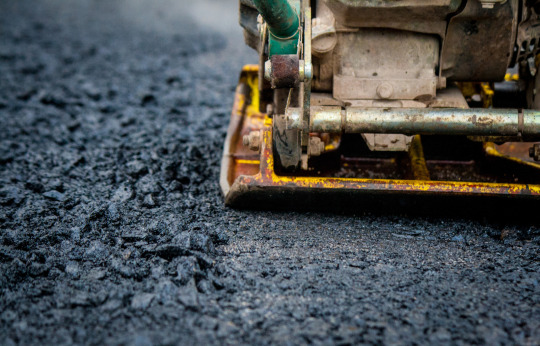
Strategies For Preventing Asphalt Melting
Fortunately, there are several strategies that can be implemented to prevent asphalt from melting in Australia's hot climate. One effective approach is to use reflective coatings on the surface of the asphalt. Reflective coatings can reflect a significant amount of sunlight and reduce the temperature of the asphalt surface. This, in turn, can reduce the risk of melting and deformation, extending the lifespan of the asphalt.
Another strategy for preventing asphalt melting is to choose a high-quality asphalt mix. High-quality asphalt mix can be more durable and more resistant to melting and deformation. By using better-quality materials, roads and pavements can remain in better condition for longer, reducing the need for costly repairs and replacements.
Reducing traffic and weight load is another effective way to prevent asphalt melting. By reducing the number of vehicles on the road and limiting the weight of heavy vehicles, we can reduce the amount of heat generated by friction and pressure on the asphalt. This can help to reduce the risk of deformation and damage.
Implementing shading structures and trees can also help to prevent asphalt melting. By providing shade over roads and pavements, we can reduce the amount of direct sunlight that reaches the surface, keeping it cooler and less prone to melting. Trees can also help to provide shade and reduce temperatures, as well as providing other environmental benefits such as improved air quality and carbon sequestration.
By implementing a combination of these strategies, we can effectively prevent asphalt from melting and maintain durable and reliable infrastructure in Australia. It's important to choose the most appropriate approach for each situation and to consider the interrelated factors that contribute to asphalt melting. With careful planning and effective implementation, we can ensure that our roads and pavements remain safe and sustainable for years to come.
Best Practices For Maintaining Asphalt Durability
Maintaining the durability of asphalt is critical for ensuring the longevity of roads and pavements. Implementing best practices for maintenance can help prevent damage to the asphalt and prolong its lifespan. One of the most important practices is regular cleaning and maintenance. Keeping asphalt surfaces clean and free of debris, such as leaves and dirt, can prevent moisture buildup, which can cause the asphalt to weaken and crack. Regular inspections and cleaning can also help identify any areas that require repair or replacement.
Addressing cracks and potholes promptly is another essential practice for maintaining the durability of asphalt. Even minor cracks and potholes can lead to further damage if left untreated, as moisture can seep in and cause the asphalt to degrade further. Repairing these issues as soon as they are identified can prevent further damage and extend the lifespan of the asphalt.
Using porous pavement options is another best practice for maintaining asphalt durability. Porous pavement options allow water to seep through the surface and into the ground, reducing the risk of moisture buildup and preventing damage to the asphalt. Additionally, porous pavement options can help to reduce the urban heat island effect by reducing the amount of heat absorbed by the asphalt surface.
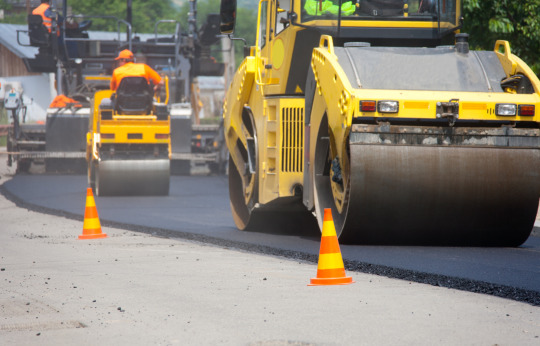
By implementing these best practices, we can ensure that our asphalt remains durable and reliable, reducing the need for costly repairs and replacements. Regular maintenance, prompt repairs, and the use of porous pavement options can help to prevent damage to the asphalt and extend its lifespan, improving safety for drivers, cyclists, and pedestrians. Preventing asphalt melting is crucial for maintaining safe and reliable roads in Australia's scorching climate. By implementing the tips mentioned above, such as using reflective coatings and adjusting the asphalt mix, roads can withstand extreme temperatures and reduce the risk of accidents. It's also essential to have regular maintenance checks and repairs to ensure any damage is addressed promptly. If you need assistance in preventing asphalt melting or maintaining your roads, Road Seal Australia is here to help. Contact them today for expert advice and quality services to keep your roads in top condition.
1 note
·
View note
Text
Are Fuel Monitoring Systems Required for Australian Trucks?
Fuel monitoring systems are a critical component of the trucking industry, designed to accurately measure fuel consumption and detect any potential fuel theft or inefficiencies in the system. These systems use a range of technologies, such as sensors and GPS tracking, to monitor fuel levels in real-time, providing accurate data on fuel consumption, mileage, and driver behaviour.
The importance of fuel monitoring systems in the trucking industry cannot be overstated. Fuel is one of the largest expenses for trucking companies, and any inaccuracies or inefficiencies in the fuel system can have a significant impact on a company's bottom line. Fuel monitoring systems help companies to reduce fuel costs, increase fuel efficiency, and improve overall fleet management. These systems also play a vital role in reducing the carbon footprint of the trucking industry, by promoting more efficient and sustainable fuel consumption practices.

The purpose of this article is to explore the current state of fuel monitoring systems for trucks in Australia and to answer the question of whether these systems are mandatory or optional. The article will discuss the laws and regulations surrounding fuel monitoring systems in Australia, the benefits and drawbacks of mandatory and optional systems, and best practices for fuel monitoring system implementation. By the end of the article, readers will have a better understanding of the importance of fuel monitoring systems in the trucking industry and the options available to them for implementing these systems in their businesses.
The Current State of Fuel Monitoring Systems in Australia
In Australia, the regulations and laws surrounding fuel monitoring systems are complex and depend on the type and size of the vehicle being used. For example, vehicles with a gross vehicle mass (GVM) of over 4.5 tonnes are required to comply with the Heavy Vehicle National Law (HVNL), which mandates the use of on-board mass (OBM) systems. These systems monitor the vehicle's weight, including fuel levels, to ensure that they do not exceed legal weight limits.
In addition to the HVNL, the Australian Taxation Office (ATO) requires all businesses that use fuel for their operations to maintain accurate records of their fuel use and report this information on their tax returns. This requirement applies to all businesses, including those that do not use heavy vehicles.
Compared to other countries, Australia's fuel monitoring systems are considered to be relatively advanced, with many companies using GPS tracking and telematics systems to monitor fuel consumption in real-time. However, there is still room for improvement, particularly in the areas of data analysis and reporting.
Fuel monitoring systems are an essential tool for fleet management in Australia's trucking industry. While the regulations and laws surrounding these systems are complex, they are designed to promote safety and reduce the environmental impact of the industry. Compared to other countries, Australia's fuel monitoring systems are relatively advanced but there is still room for improvement in data analysis and reporting.
Mandatory Fuel Monitoring Systems in Australia
In Australia, the use of mandatory fuel monitoring systems is primarily governed by the Heavy Vehicle National Law (HVNL). The law requires all heavy vehicles over 4.5 tonnes GVM to be fitted with an approved electronic system that can record the vehicle's distance, speed, and fuel consumption. The system must also be tamper-proof and capable of generating reports that can be used to monitor driver behaviour and fuel consumption.
The benefits of mandatory fuel monitoring systems are significant, particularly for fleet operators. These systems provide accurate and reliable data on fuel consumption, allowing companies to identify inefficiencies and reduce fuel costs. They also help to improve driver behaviour by providing feedback on speeding, harsh braking, and idling, leading to safer driving practices and reduced wear and tear on vehicles.
Despite the benefits of mandatory fuel monitoring systems, there are some reasons why operators may be hesitant to install them. The upfront costs associated with purchasing and installing these systems can be significant, which may be a concern for smaller operators with limited budgets. Additionally, the ongoing maintenance and monitoring of the system can require additional resources and administrative workload. There is also a risk of false alarms or errors, which can further add to the workload and require additional attention.
Mandatory fuel monitoring systems are required for heavy vehicles in Australia and provide numerous benefits to fleet operators, including improved fuel efficiency and driver behaviour. While there are some drawbacks to these systems, several companies in Australia have successfully implemented them to comply with regulations and improve their operations.

Optional Fuel Monitoring Systems in Australia
Optional fuel monitoring systems are an increasingly popular tool for companies looking to manage their fuel consumption and costs. These systems allow companies to track fuel usage in their vehicles and identify inefficiencies or areas for improvement.
One of the most significant benefits of fuel monitoring systems is cost savings. By identifying areas where fuel consumption can be reduced, companies can save money on their fuel expenses. This can be particularly important for companies that operate a large fleet of vehicles, where even small improvements in fuel efficiency can add up to significant cost savings over time.
Another benefit of fuel monitoring systems is increased accountability. These systems provide data that can be used to hold drivers accountable for their fuel usage and ensure that they are following company policies. This can help reduce fuel waste and prevent drivers from engaging in unsafe or inefficient driving practices.
Fuel monitoring systems can also help improve safety by identifying potential issues before they become serious problems. For example, a fuel monitoring system may detect a fuel leak or an issue with a vehicle's fuel system, allowing the company to address the issue before it causes an accident.
There are also environmental benefits to implementing a fuel monitoring system. By reducing fuel consumption, companies can decrease their greenhouse gas emissions and contribute to a more sustainable future. This can be particularly important for companies that are committed to reducing their environmental impact and meeting sustainability goals.
Fuel monitoring systems can be a valuable tool for companies looking to manage their fuel consumption and costs. By identifying areas for improvement and holding drivers accountable, companies can reduce fuel waste, improve safety, and contribute to a more sustainable future. However, companies must carefully consider the costs and potential drawbacks of implementing a fuel monitoring system before making a decision.
Best Practices for Fuel Monitoring Systems in Australia
Fuel monitoring systems are crucial tools for businesses in Australia that rely heavily on fuel, such as transportation, logistics, mining, and agriculture. These systems help to monitor fuel usage, detect leaks, and prevent fuel theft, thereby reducing operating costs and increasing efficiency. However, selecting and implementing the right fuel monitoring system can be a challenging task. In this article, we will discuss some tips for selecting the right fuel monitoring system for your business, an overview of best practices for fuel monitoring system implementation, and some case studies of companies that have successfully implemented fuel monitoring systems.
When selecting a fuel monitoring system, it is essential to consider the type of fuel used, the size and location of the fuel storage tanks, and the number of vehicles or equipment that will be monitored. It is also crucial to consider the features of the fuel monitoring system, such as real-time data monitoring, automatic data logging, and remote access. Additionally, the system should be easy to install, operate, and maintain.
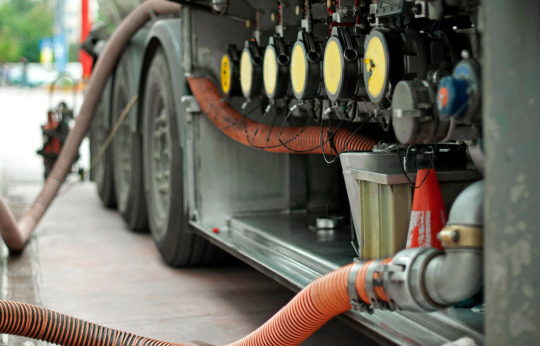
The implementation of a fuel monitoring system should follow some best practices to ensure that it delivers the desired results. Firstly, it is essential to set clear objectives and performance indicators to measure the system's effectiveness. Secondly, it is crucial to train employees on how to use the system and interpret the data generated by the system. Thirdly, it is essential to regularly maintain and calibrate the system to ensure its accuracy and reliability. Finally, it is vital to ensure that the system complies with relevant Australian regulations and standards, such as those set by the Australian Petroleum Statistics Reporting.
While it may not be mandatory for trucks in Australia to have fuel monitoring systems installed, it is highly recommended. Implementing a fuel monitoring system can help businesses reduce fuel costs, prevent fuel theft, and monitor fuel usage to improve efficiency. Banlaw is a leading provider of fuel management solutions in Australia and can assist you in selecting and implementing the right fuel monitoring system for your business. Contact Banlaw today to learn more about their range of fuel management products and services and how they can help your business achieve optimal fuel efficiency.
0 notes
Text
Roaming the Savanna: Staying Safe on Your Kenyan Adventure
Roaming the savanna in Kenya can be an exhilarating adventure. From the majestic Maasai Mara to the serene Tsavo East National Park, there is a lot to explore in this beautiful country. However, it is important to prioritise safety when embarking on any adventure, and this is particularly true when exploring the Kenyan wilderness. Kenya, like many countries in Africa, is home to a diverse range of wildlife, including predators like lions, cheetahs, and leopards, which can pose a significant threat to humans. Additionally, there is also the risk of contracting diseases like malaria and yellow fever. Therefore, it is crucial to take the necessary precautions to ensure a safe and enjoyable trip.

This blog post aims to highlight the potential risks and dangers that come with exploring the Kenyan wilderness, including the presence of wildlife, the risk of contracting diseases, and other safety concerns. It provides practical advice on how to minimise these risks and stay safe during the trip, such as packing appropriate gear, knowing the rules of the safari, and following the guidance of experienced guides. The blog also emphasises the importance of enjoying the adventure while maintaining a level of caution and respect for the environment and the wildlife. Overall, the purpose of the blog is to help individuals plan a safe and memorable luxury Kenyan safari adventure that is enjoyable.
Research and Preparation
When planning a trip to Kenya, it's important to conduct thorough research about the area you'll be visiting. This includes understanding the cultural norms, safety concerns, and attractions to visit. By doing so, you'll be able to make informed decisions about where to go and how to navigate the country.
In addition, it's important to check with your doctor or a travel health clinic to determine which vaccinations are necessary for your trip. Some common vaccinations recommended for Kenya include hepatitis A and B, typhoid, and yellow fever. You should also take precautions to avoid mosquito bites and consider taking antimalarial medication.
Make sure you have adequate health insurance coverage before embarking on your trip. This can include medical evacuation coverage in case of an emergency. It's also a good idea to have a copy of your insurance information with you at all times in case of an emergency.
When planning your route in Kenya, consider the time of year and weather conditions. Some areas may be inaccessible during certain seasons, while others may be overcrowded. Take the time to research the best time to visit each destination and plan accordingly.
When packing for your trip to Kenya, be sure to include essentials such as sunscreen, insect repellent, comfortable walking shoes, and appropriate clothing for the weather conditions. You may also want to bring a reusable water bottle to minimize your impact on the environment and stay hydrated. It's also important to pack any necessary medications and travel documents, such as your passport and visa. With careful planning and preparation, your trip to Kenya can be an enjoyable and memorable experience.
Safety on Safari
When visiting Kenya, it's important to take necessary precautions to ensure a safe and enjoyable experience. Hiring a reputable guide is essential to get the most out of your visit. A good guide will be knowledgeable about the park, its history, and wildlife, and will be able to provide valuable insights and advice. To find a reputable guide, do some research before your trip, read reviews, and ask for recommendations from friends or travel agencies.
Following park rules and regulations is also crucial for your safety and the preservation of the park. Parks have rules and regulations to protect both visitors and wildlife, so it's important to follow them. These rules may include restrictions on where you can go, what you can do, and how you should behave. Ignoring these rules can result in fines, injury, or even death.
Staying in your vehicle is another important safety measure when visiting a park in Kenya. Wildlife can be unpredictable, and getting out of your vehicle can put you in harm's way. Even if an animal seems calm or docile, it's important to remember that they are still wild animals and can react quickly and aggressively if they feel threatened.
Avoiding contact with wildlife is also crucial for your safety and the safety of the animals. It's important to remember that these animals are not domesticated pets and can be dangerous if provoked. Keep a safe distance from animals, and do not attempt to touch, feed, or interact with them in any way.
Properly disposing of trash is also essential to help preserve the park's natural beauty and protect the wildlife. Leaving trash lying around can harm animals and damage their habitat. Be sure to properly dispose of all trash, including food waste and plastics, in designated areas or take it with you when leaving the park.
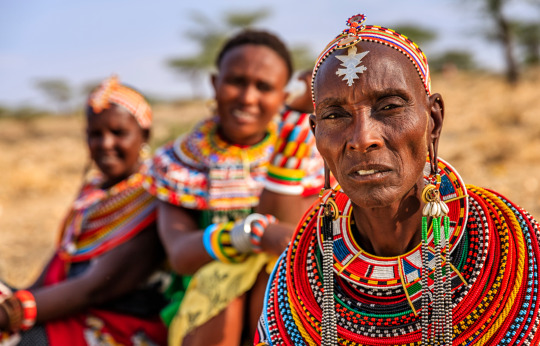
Interacting with the Local Community
When visiting Kenya, it is important to be aware of the local customs and etiquette. Kenya has a diverse population with over 40 different ethnic groups, each with their own unique customs and traditions. Therefore, it is important to do some research and learn about the customs and traditions of the people you will be interacting with during your visit. Some common customs in Kenya include greeting people with a handshake, removing shoes before entering a home, and avoiding discussing sensitive topics such as religion and politics.
It is also important to be aware of areas with high crime rates in Kenya. Like any other country, Kenya has its fair share of crime, and some areas may be more dangerous than others. Research the crime rates in the areas you plan to visit and avoid any areas that are known to be high-risk. This can help ensure a safe and enjoyable trip.
For those interested in cultural experiences, hiring a local guide can be a great way to learn about the local customs and traditions of Kenya. Local guides can provide insights into the local culture, history, and customs that you might not learn from a guidebook or online research. They can also provide recommendations on places to visit and things to do that are off the beaten path.
It is important to respect cultural differences when visiting Kenya. This means being mindful of cultural norms and values, and adapting your behaviour accordingly. For example, in Kenya, it is customary to dress modestly, so avoid wearing revealing clothing. It is also important to be respectful of the local customs and traditions, even if they are different from your own. By being respectful and open-minded, you can make the most of your visit to Kenya and create a positive and memorable experience.
Health and Hygiene
When visiting Kenya, it's essential to stay hydrated to avoid dehydration, which can be especially challenging in hot and dry weather. Make sure to drink plenty of water and other fluids regularly throughout the day, even if you don't feel thirsty. You can also eat foods with high water content, such as fruits and vegetables, to help stay hydrated. However, be cautious about drinking tap water as it may not be safe to drink. Instead, stick to bottled water or purified water.
Preventing mosquito bites is another critical aspect of staying healthy while in Kenya. Mosquitoes can transmit a variety of diseases, including malaria and dengue fever. To avoid mosquito bites, wear long-sleeved shirts and pants, especially during dawn and dusk when mosquitoes are most active. Apply mosquito repellent that contains DEET or picaridin on exposed skin, and consider sleeping under a mosquito net at night to prevent mosquito bites while sleeping.
Avoiding contaminated water is another significant concern in Kenya, as waterborne illnesses such as cholera and typhoid are prevalent. Avoid drinking tap water, and be cautious when consuming other beverages made with tap water, such as ice cubes or juices. Use bottled water or purified water for drinking, brushing teeth, and washing fruits and vegetables. Also, avoid swimming in stagnant water or water sources that may be contaminated.
Finally, it's always advisable to bring first aid essentials when travelling, and Kenya is no exception. Consider packing a first aid kit that includes bandages, antiseptic wipes, pain relievers, anti-diarrheal medication, and any prescription medications you need. It's also wise to carry insect repellent, sunscreen, and a hat to protect yourself from the sun's harsh rays.
Safety in Accommodations
If you're planning a trip to Kenya, it's important to do your due diligence when researching accommodations. Look for reviews online to find reputable and safe hotels or guesthouses. It's also a good idea to check if the property has safety features such as security guards, surveillance cameras, or secure parking. This can help ensure your safety during your stay.
Once you've found a suitable accommodation, make sure to take the necessary precautions to keep yourself and your belongings safe. Keep all doors and windows locked when you're inside, especially at night or when you're not in the room. You can also use additional locks or door wedges for added security.
To avoid theft, keep your valuables such as money, passports, and electronics in a secure place such as a hotel safe or a locked suitcase. Be cautious when carrying your belongings outside and try to keep them close to you at all times.
It's also important to be familiar with emergency procedures in case of any unexpected situations. Ask the hotel staff about emergency contacts and evacuation plans. You can also research the local emergency services such as hospitals, police stations, and fire departments.

In conclusion, exploring the savannas of Kenya can be a thrilling and memorable experience, but it is essential to prioritise safety throughout your adventure. By following the guidelines mentioned in this blog post, such as being aware of your surroundings, respecting the wildlife, and choosing reputable tour operators, you can make the most of your Kenyan adventure without compromising on safety.
If you're planning a trip to Kenya and would like assistance in organising a safe and enjoyable safari, don't hesitate to reach out to Destinations Africa. With their extensive knowledge and expertise in the region, they can provide you with tailored advice and guidance to make your journey a truly unforgettable experience. So start planning your Kenyan adventure today and contact Destinations Africa to ensure a safe and enjoyable journey.
0 notes
Text
Compatibility of Chemical Drain Cleaners with Your Septic System
Septic systems play a crucial role in managing household waste and sewage. These underground structures are designed to break down and treat the wastewater that flows from your home's plumbing. However, many homeowners are unaware of the potential damage caused by chemical drain cleaners, which can harm septic systems and compromise their effectiveness. While these products are marketed as a quick and easy solution to unclogging drains, they can have long-term consequences for septic health. In this blog post, we'll explore the compatibility of chemical drain cleaners with septic systems, how septic tank cleaners can help you and provide tips for maintaining a healthy and functional septic system.

Overview of Chemical Drain Cleaners
Chemical drain cleaners are a popular solution for clearing clogs in drains and pipes. These products typically contain strong alkaline or acidic chemicals that break down blockages and allow water to flow freely. While these cleaners may be effective in removing clogs, they can have harmful effects on septic systems.
Septic tanks rely on the presence of bacteria to break down and treat waste. The use of chemical drain cleaners can disrupt the balance of these bacteria, leading to a less effective septic system. The chemicals in these cleaners can also damage the tank's walls and pipes, leading to leaks and other problems.
In addition to harming the septic system, chemical drain cleaners can also be harmful to the environment. When these products are flushed down the drain, they can end up in waterways and cause pollution. Many chemical drain cleaners are also corrosive and can cause damage to plumbing fixtures and pipes.
Fortunately, there are alternatives to chemical drain cleaners that are safe for septic systems. These include natural or enzymatic cleaners that use bacteria to break down clogs and organic matter. Regular maintenance and cleaning of drains can also help prevent clogs and reduce the need for harsh chemicals. By taking care to use septic-safe products and maintain a healthy septic system, homeowners can avoid the potential problems caused by chemical drain cleaners.
Types of Chemical Drain Cleaners
Acidic Drain Cleaners:
Acidic drain cleaners are a type of chemical cleaner that are used to dissolve or break down organic substances, such as hair, soap scum, and grease, that may be causing a clog in a drain. These types of cleaners typically contain high levels of sulfuric acid or hydrochloric acid, which are highly corrosive and can be very dangerous if not used properly. Acidic drain cleaners work by reacting with the organic material and producing heat and gas, which helps to dissolve and break down the clog.
While acidic drain cleaners can be effective in clearing clogs, they are not recommended for all types of pipes, as they can corrode and damage certain materials, such as PVC pipes. They can also be harmful to the environment if not disposed of properly and can cause chemical burns if they come into contact with the skin or eyes. As such, it is important to always follow the instructions on the label carefully and wear protective gear, such as gloves and eye goggles, when using an acidic drain cleaner.
Alkaline Drain Cleaners
Alkaline drain cleaners are another type of chemical drain cleaner that are commonly used to clear clogs in drains. These types of cleaners typically contain high levels of sodium hydroxide or potassium hydroxide, which are highly caustic and can be very dangerous if not used properly. Alkaline drain cleaners work by breaking down the organic material in a clog and turning it into a soap-like substance, which can then be easily flushed away.
While alkaline drain cleaners can be effective in clearing clogs, they can also be harmful to the environment and to human health if not used properly. They can cause chemical burns if they come into contact with the skin or eyes, and can also be very dangerous if ingested. Additionally, alkaline drain cleaners should not be used in conjunction with acidic cleaners, as the two chemicals can react and produce toxic gases. As such, it is important to always follow the instructions on the label carefully and wear protective gear, such as gloves and eye goggles, when using an alkaline drain cleaner.
Enzymatic Drain Cleaners
Enzymatic drain cleaners are a type of chemical drain cleaner that works by using natural enzymes to break down organic material in a clog. These types of cleaners are typically made from natural ingredients, such as bacteria and enzymes, and are considered to be more environmentally friendly than acidic or alkaline cleaners. Enzymatic drain cleaners work by introducing bacteria or enzymes into the clog, which then break down the organic material and turn it into a liquid or gas that can be easily flushed away.
While enzymatic drain cleaners are generally considered to be safe and effective, they can take longer to work than acidic or alkaline cleaners, and may not be able to clear more stubborn clogs. Additionally, enzymatic drain cleaners may not be suitable for all types of clogs, and may not be effective in pipes that are completely blocked. As such, it is important to read the label carefully and choose the right type of enzymatic drain cleaner for your needs. It is also important to note that enzymatic drain cleaners should not be used in conjunction with other types of drain cleaners, as this can cause the enzymes to become ineffective.

Comparison Of The Effectiveness
Septic tanks require special consideration when it comes to drain cleaners because the chemicals in certain types of cleaners can harm the septic system's bacterial balance, which is critical for breaking down waste. There are three main types of drain cleaners: chemical, enzymatic, and mechanical. Each type of cleaner has different levels of effectiveness for septic tanks.
Chemical drain cleaners use strong chemicals like sodium hydroxide or sulfuric acid to dissolve clogs. While these cleaners can be very effective at unclogging drains, they can harm septic tanks. The chemicals can kill the bacteria in the tank, leading to system failure. If you choose to use a chemical cleaner, be sure to read the label and choose one that is safe for septic tanks.
Enzymatic drain cleaners use bacteria or enzymes to break down clogs. These cleaners are generally safer for septic systems because they work with the natural bacterial balance in the tank. However, they can take longer to work and may not be as effective on tough clogs.
Mechanical drain cleaners use physical force, such as a plumbing snake, to remove clogs. These cleaners are generally safe for septic systems, as they do not introduce any chemicals or bacteria into the tank. However, they may not be effective on all types of clogs, and they can be difficult to use without the proper equipment.
The best way to maintain a healthy septic system is to prevent clogs from occurring in the first place. This means being mindful of what you put down your drains, such as avoiding flushing non-biodegradable items like wet wipes or using too much grease when cooking. If you do experience a clog, consider using an enzymatic or mechanical cleaner instead of a chemical cleaner to minimise the risk of harm to your septic system.
The Effects of Chemical Drain Cleaners
Chemical drain cleaners are commonly used to unclog pipes and clear blockages in residential and commercial plumbing systems. However, their use can have adverse effects on septic systems. Septic systems rely on bacteria to break down organic waste, and chemical drain cleaners can kill these essential microorganisms, leading to system failure.
The active ingredients in chemical drain cleaners, such as sodium hydroxide and sulfuric acid, can react with the water and waste in septic systems, leading to an increase in pH levels and a decrease in the oxygen levels in the tank. This can create an environment that is hostile to the beneficial bacteria that are necessary for the proper functioning of the system.
Additionally, chemical drain cleaners can cause damage to the septic tank and drain field. The corrosive nature of these products can erode the pipes and cause leaks, leading to further damage to the system. This can result in costly repairs and replacements, as well as potential environmental damage.
To avoid these negative effects on septic systems, it is recommended to use alternative methods for unclogging drains, such as manual snaking or enzymatic cleaners. Regular septic system maintenance, including pumping and inspections, is also crucial to ensuring the long-term health and functionality of the system.
Alternatives to Chemical Drain Cleaners
Chemical drain cleaners can be dangerous and damaging to both your pipes and the environment. Fortunately, there are several alternative methods for unclogging your drains that are both safe and effective. One of the most popular and effective alternatives to chemical drain cleaners is a combination of baking soda and vinegar. Pour 1/2 cup of baking soda down the drain followed by 1/2 cup of vinegar. Cover the drain and let the mixture sit for 30 minutes. Then, flush the drain with hot water. This method can help to dissolve clogs and eliminate odours.
Plungers are a classic tool for unclogging drains. Place the plunger over the drain and apply firm pressure, then pull up quickly to create suction. Repeat this motion several times until the blockage is cleared. Drain snakes are long, flexible tools that can reach deep into your pipes to remove clogs. Insert the snake into the drain and turn the handle clockwise to break up the blockage. Then, pull the snake out of the drain and discard any debris.
For minor clogs, pouring boiling water down the drain can be an effective solution. Boil a pot of water and carefully pour it down the drain in 2-3 stages, allowing each stage to work for a few seconds before pouring in more water. This method can help to dissolve grease and other buildups in your pipes. There are many safe and effective alternatives to chemical drain cleaners that can help to keep your pipes clean and clear. By using these methods, you can save money, protect your plumbing, and do your part to protect the environment.

Do You Have a Septic Tank Issue?
It is clear that not all drain cleaners are compatible with a septic system and it's important to be aware of the consequences before using chemical cleaners on systems. Furthermore, when it comes to finding safe chemical drain cleaners for septic tanks, there’s no “one size fits all.” Each person has to weigh their options and select the proper cleaner for their system based on their own parameters.
Ultimately, consulting a professional septic cleaner that knows your local codes is the best bet when it comes to choosing the right product for your system. Even with natural products, consult with a professional septic tank cleaner first. The professionals at Ward Septics understand how important it is to provide you with quality service so that your septic tanks will last for many years to come. They have decades of experience working in the industry helping homeowners make smart decisions and keep their septic systems properly maintained. Are you looking for septic tank cleaners? Contact Ward Septics today!
0 notes
Text
Exploring the Evolution of Plantation Shutter Materials
Do you remember the iconic plantation shutters that decorated your grandparents' homes? These classic window treatments have been around for centuries, providing timeless design and light control. Have you wondered what materials have been used to make these unique designs over time? Today, plantation shutters come in a variety of colours and material choices from wood to composite or faux wood.

In this blog post, we'll explore the evolution of materials for plantation shutter construction – taking you through history and into present day options so you can pick the perfect fit for your home. Let's begin our journey through time as it relates to one of interior design’s all-time favourites…plantation shutters!
The Plantation Shutters and It’s Material
Plantation shutters are a type of interior window treatment consisting of horizontal slats that can be adjusted to control the amount of light and airflow entering a room. These shutters are typically made of wood, but can also be constructed from synthetic or natural materials. Plantation shutters are popular in homes for their elegant appearance and versatility in allowing natural light while providing privacy.
They are also effective in blocking out sunlight and heat, making them a practical solution for regulating the temperature of a room. Additionally, plantation shutters can add value to a home due to their aesthetic appeal and durability. Overall, plantation shutters serve both functional and decorative purposes in interior design.
Plantation shutters are an essential element of interior design and home decor, and they have been used for centuries to regulate light and airflow while also providing privacy. The materials used in plantation shutters have evolved over time due to a variety of factors, including advancements in technology, changes in design trends, and the availability of new materials.
The importance of materials in plantation shutters is multifaceted. First, the materials used can significantly impact the appearance and style of the shutters. For example, natural wood shutters provide a warm and classic look that is perfect for traditional homes, while synthetic materials like vinyl or composite materials may be better suited for contemporary or modern designs.
The materials used can affect the functionality and durability of the shutters. Plantation shutters are expected to withstand the test of time and endure everyday wear and tear. Choosing the right materials can help ensure the shutters last for years without any issues. For example, if the shutters are exposed to moisture or humidity, materials like PVC or aluminium may be more suitable since they are resistant to rot and warping.
The materials used in plantation shutters can affect the energy efficiency of a home. Shutters are known for their ability to block out heat and sunlight, which can help reduce energy bills. Certain materials like polywood, a synthetic material, have high insulation properties that prevent heat transfer, making them more energy-efficient than other materials.
Early Plantation Shutter Materials
Plantation shutters have been around for centuries, and their materials have evolved over time. In their early history, plantation shutters were primarily made of wood or iron. Wood was the most common material used for plantation shutters in their early history. The advantages of wood include its natural beauty, availability, and workability.
Wooden shutters could be made to fit any window size and shape, and they could be customised with various finishes and stains. However, wooden shutters were susceptible to warping, cracking, and rotting over time, especially in humid or damp environments. They also required regular maintenance, including painting or staining, to protect them from weather damage.
Iron was another material used for plantation shutters in their early history, particularly in commercial or institutional settings. Iron shutters offered greater security and durability than wooden shutters, as they were resistant to weather damage, fire, and break-ins. However, iron shutters were heavy and difficult to operate, and they lacked the warmth and aesthetic appeal of wooden shutters.
Both wood and iron had their advantages and disadvantages as materials for plantation shutters in their early history. Wooden shutters were beautiful and customizable but required maintenance and were susceptible to damage. Iron shutters were durable and secure but heavy and lacking in aesthetics. Today, there are many other materials used for plantation shutters, including vinyl, composite materials, and aluminium, that offer a range of benefits and drawbacks.

Development of Synthetic Materials
The emergence of synthetic materials for plantation shutters can be traced back to the 20th century, when new technologies and manufacturing processes allowed for the development of materials that could mimic the look and feel of traditional materials like wood, while offering greater durability and resistance to environmental factors.
One of the most common materials used for synthetic plantation shutters today is PVC, or polyvinyl chloride, which is a type of plastic that can be moulded and extruded into a variety of shapes and sizes. Other synthetic materials used for plantation shutters include composite materials, which are made by combining different materials such as wood fibres and plastic resins.
To make synthetic plantation shutters, the materials are first processed into a raw form, such as pellets or sheets, which can then be shaped and cut into the desired form. Depending on the material and manufacturing process, synthetic plantation shutters may be moulded, extruded, or cut to size using computer-controlled machinery.
One of the main benefits of synthetic materials for plantation shutters is their durability and resistance to environmental factors such as moisture, sunlight, and temperature changes. Unlike traditional materials like wood, synthetic materials do not warp, crack, or fade over time, making them a popular choice for homeowners looking for a low-maintenance and long-lasting window treatment option.
Synthetic materials also tend to be more affordable than traditional materials, making them a popular choice for homeowners on a budget. Additionally, they may be available in a wider range of colours and finishes than traditional materials, allowing for greater customization and design flexibility.
However, there are also some downsides or criticisms of synthetic materials for plantation shutters. One of the main criticisms is that they may not have the same aesthetic appeal as traditional materials like wood, which can have a natural and warm look that is difficult to replicate with synthetic materials.
Some people may be concerned about the environmental impact of synthetic materials, as they are typically made from non-renewable resources and may not be biodegradable or recyclable. Finally, some synthetic materials may be prone to scratching or damage from pets or children, which can be a concern for homeowners with active households.
The Future of Plantation Shutters
One potential direction for future development in plantation shutter materials is the use of recycled materials. There has been a growing trend towards using recycled materials in various consumer products, and plantation shutters are no exception. Manufacturers can use materials such as recycled plastic, wood, or even aluminium to create plantation shutters that are more eco-friendly. Not only does this help to reduce waste, but it also reduces the demand for new materials and can help to lower the overall carbon footprint of the product.
Another potential direction is the use of natural fibres or organic materials. As consumers become more environmentally conscious, they are increasingly looking for products that are made from natural, sustainable materials. Plantation shutters made from materials like bamboo or other natural fibres could offer a more sustainable option for consumers. These materials are also often very durable, which could make them an attractive option for homeowners who are looking for a long-lasting window covering solution.
In addition to sustainability concerns, consumer preferences are also driving the evolution of plantation shutter materials. For example, many consumers are looking for shutters that are easy to clean and maintain. Some new materials, such as vinyl or composite materials, offer easy maintenance and are resistant to moisture, making them a popular option. Consumers may also be drawn to materials that offer better insulation, which can help to reduce energy costs and make a home more comfortable.
There are many potential directions for future development in plantation shutter materials. As consumers become more environmentally conscious and demand more sustainable products, manufacturers will need to continue to innovate and explore new materials. At the same time, they will also need to take into account consumer preferences for durability, ease of maintenance, and energy efficiency to create products that meet the needs of today's homeowners.

Plantation shutters have come a long way since they were first invented. Not only have they become easier to use, but the materials and techniques used to construct them have also evolved over the years. Today’s plantation shutters offer tremendous versatility in terms of product range, style, and affordability of materials available. Whether you’re looking for a timeless classic or something more trend-forward, there’s sure to be something that will fit your individual preferences and budget.
So don’t hesitate— explore the world of plantation shutters today and discover a new level in home decor! And if you’re considering making this important investment into your home, consider contacting Belle Blinds and Shutters for expert advice on which type of shutter is best suited to your needs. With such a wide selection available, you can be sure that the perfect shutter is out there waiting for you. Thanks for taking part in this journey with me—happy shopping!
0 notes
Text
A Comprehensive Guide to Your Apartment Inspection Report
Are you a new home owner or do you rent out your home? If so, then it's likely that you've heard of an apartment inspection report. Don't worry if this is news to you - we've got you covered! In this comprehensive guide to the apartment inspection report, we'll give the lowdown on why inspections are important and how they can protect both the landlords and tenants. We'll also be giving some valuable tips on what should be included in your own report as well as any potential red flags which could arise during an inspection! So no matter whether you're just getting onto the property ladder or already experienced in renting/letting housing, get ready for some insight into understanding exactly what every landlord should know when it comes to carrying out apartment inspections.

The Purpose of An Apartment Inspection Report
An apartment inspection report is a comprehensive evaluation of the condition of an apartment before a tenant moves in. The purpose of the report is to document the state of the apartment, including its structure, systems, appliances, and fixtures, so that both the landlord and tenant have a clear understanding of the condition of the property.
The report serves as a reference for the landlord and tenant, allowing them to quickly and easily review the condition of the apartment at the time of move-in and to track changes to the apartment over time. By providing a detailed inventory of the apartment's features and systems, the inspection report helps ensure that both the landlord and tenant are aware of any existing damage or issues that need to be addressed.
In addition to documenting the condition of the apartment, the inspection report can also help to prevent disputes between the landlord and tenant. For example, if the report notes that a certain appliance is not functioning properly, the tenant can request repairs or replacements in a timely manner. This can help to avoid misunderstandings and disagreements later on.
An apartment inspection report can also be useful for insurance purposes. If the apartment is damaged or destroyed, the report can help to prove the extent of the damage and can be used as evidence in any insurance claims that may be filed. Remember, this is an important tool that provides a comprehensive overview of the condition of an apartment at the time of move-in. By serving as a reference for both the landlord and tenant, the report helps to ensure that everyone is on the same page and helps to prevent disputes and misunderstandings.
Importance of Understanding The Report
Understanding an apartment inspection report is crucial for anyone looking to rent or buy a property. This report provides a detailed evaluation of the condition of a rental unit, including any potential issues or problems that may need to be addressed. By understanding the report, renters and buyers can make informed decisions about the property and know what to expect in terms of maintenance and repair costs.
An apartment inspection report typically covers areas such as the structure and foundation of the building, electrical and plumbing systems, and the condition of appliances and fixtures. The report will highlight any damages, wear and tear, or malfunctions that are present in the property, which will help renters and buyers make informed decisions about their future living arrangements. For instance, if the report indicates that the electrical system is outdated, renters or buyers can budget for the cost of an upgrade.
In addition to identifying potential repair costs, an apartment inspection report also helps to ensure that the property meets local health and safety standards. A thorough inspection report will check for fire hazards, toxic substances, and any other hazards that may pose a risk to residents. By understanding the report, renters and buyers can be confident that they are moving into a safe and secure property.
An apartment inspection report also serves as a valuable tool in negotiating the terms of a rental or purchase agreement. Renters or buyers can use the report to negotiate a better deal, or to request that the property owner make necessary repairs before moving in. This can help to ensure that the property is in good condition and that renters or buyers are not faced with unexpected repair costs down the line.
Understanding an apartment inspection report is an essential part of the process of renting or buying a property. It provides valuable information about the condition of the property, including any potential hazards, and can help renters and buyers make informed decisions about their future living arrangements.

Understanding The Contents of The Report
An apartment inspection report is a document that details the condition of a rental unit. The report typically covers all aspects of the apartment, from the flooring and walls to the appliances and electrical systems. It is used by landlords and tenants to assess the state of the property and identify any repairs or improvements that may need to be made.
The report is usually divided into several sections, each covering a different aspect of the apartment. The first section typically includes a general overview of the property, including its location, size, and age. This section may also provide information about the building, such as the number of units and the type of construction.
The next section of the report typically focuses on the interior of the apartment. This includes a detailed examination of the walls, flooring, and ceilings, as well as the windows and doors. This section may also include information about the electrical and plumbing systems, as well as the heating and cooling systems. The inspector will check for any signs of damage, such as cracks or leaks, and will make note of any necessary repairs.
Another important section of the report is the kitchen and bathroom. The inspector will check the appliances, including the stove, refrigerator, and sink, and will assess the condition of the cabinetry, countertops, and flooring. The bathroom will also be examined, including the shower, bathtub, and toilet, and the inspector will look for signs of water damage or other problems.
Finally, the report may also include a section on the exterior of the building, including the grounds and any common areas. The inspector will check for any signs of damage, such as cracks or leaks, and will assess the condition of the landscaping, sidewalks, and parking areas.
The Different Sections of The Report
Building Information: This section includes a general overview of the apartment building and the unit being inspected. This can include information such as the address, unit number, number of rooms, square footage, and age of the building. It can also include details about the building's construction, parking arrangements, and common areas. This section provides important context for the rest of the inspection report.
Room by Room Inspection: This section provides a detailed examination of each room within the unit, including the kitchen, bathroom, bedrooms, and any additional living spaces. The inspector will assess the condition of the walls, flooring, windows, doors, electrical outlets, and appliances. Any damage or wear and tear will be noted, as well as any issues with the functionality of these components. The inspector will also check for any signs of pests, moisture, or mould.
Maintenance Issues: This section identifies any maintenance issues that need to be addressed in the apartment unit. This can include issues with the heating and cooling system, plumbing, electrical systems, and appliances. The inspector will also assess the overall condition of the unit and any necessary repairs to ensure that it is in good working order.
Health and Safety Concerns: This section is dedicated to identifying any potential health and safety hazards within the unit. This can include issues such as poor ventilation, exposure to lead or asbestos, faulty electrical systems, or fire hazards. The inspector will also check for proper smoke and carbon monoxide detectors and advise if any improvements are needed.
Landlord Responsibilities: This section outlines the responsibilities of the landlord in maintaining the unit and the building. This includes tasks such as fixing maintenance issues, keeping common areas clean and well-maintained, and ensuring that the unit meets all health and safety standards.
Tenant Responsibilities: This section lists the responsibilities of the tenant in maintaining the unit and following building regulations. This can include keeping the unit clean, reporting any maintenance issues, and following all rules and regulations set forth by the landlord or building management. The tenant may also be responsible for certain repairs or upgrades, such as changing light bulbs or fixing minor plumbing issues.
Actions To Take Based On The Report's Findings
Now that you have some insight about the Apartment Inspection Report, remember that this will help both the landlord and the tenant to understand the condition of the property, and it's important to take action based on the findings.
Repairs: If the report finds any repairs that need to be made, the landlord should make arrangements to have them completed as soon as possible. This could include fixing any leaks, repairing broken windows, or fixing any electrical or plumbing issues.
Cleaning: If the report finds that the property is dirty, the landlord should arrange for a professional cleaning service to clean the property before the tenant moves in. This will ensure that the property is in good condition for the tenant.
Negotiations: If the report finds that the property is in poor condition, the tenant may want to negotiate with the landlord for a lower rent or for repairs to be made before they move in.
Termination of the lease agreement: If the report finds that the property is in such poor condition that it's not fit for habitation, the tenant may choose to terminate the lease agreement and find another rental property.
Record Keeping: It's important to keep a copy of the inspection report on file for future reference. This will help to protect both the landlord and the tenant if there are any disputes in the future.
We hope this guide of your apartment inspection report has shown you not only the importance of yearly check-ups, but also what to expect and look out for when conducting these reviews. Having a proper understanding of the inspection documents and knowing exactly what to hunt for can help you save time and money now, as well as in the future. Moreover, it is essential that landlords are aware of their tenants’ rights and adhere to them properly.

Finally, remember that it pays to do your research regarding health and safety hazards, examine any maintenance records available, take notes, and ask questions throughout the inspection process. If all else fails, remember that professionals are here to help! Are you looking for a building inspector? Contact Exceptional Building Inspection today! They’ll provide all the help you need with inspecting or managing your properties successfully.
0 notes
Text
Combining Style and Security with Chain Wire Fencing
Chain-wire fencing offers homeowners a great opportunity to increase their exterior security without compromising on style. It's strong, durable steel construction ensures you don't have to compromise on safety - chain-wire fencing is the perfect way to keep your family and possessions secure. But chain-wire fencing doesn't just have to be all about safety; it can also be an elegant design choice. With a wide range of colours and finishes available, chain-wire fencing can compliment the aesthetics of any outdoor space, while still providing optimal security. Whether you're looking for a stylish privacy fence or an industrial perimeter fence, chain-wire has you covered!

Living in a home should make you feel safe, secure and stylish—all at the same time. Sure, bumping up security may dampen your interior design dreams but with the right fencing option, you don’t have to sacrifice one for the other! Introducing chain-wire fencing: a perfect balance of form and function that can add safety features and aesthetic appeal to any property. Read on for all the details about this versatile choice — from innovative feature suggestions to materials selections, we've got everything you need to know about creating an amazing chain-wire fence system.
How Chain Wire Can Enhance Your Property
Chain wire fencing, also known as chain-link fencing, is a popular and durable option for securing and enclosing properties. Not only is it strong and long-lasting, but it is also an affordable solution for both residential and commercial properties. Here are five ways that chain wire can enhance your property.
Chain wire fencing is an effective security measure. Its tightly woven mesh and sturdy construction make it difficult to climb over or cut through, providing a barrier against intruders. This can give property owners peace of mind knowing that their property is protected.
It is also low maintenance. Unlike other types of fencing, such as wood or vinyl, chain wire does not require painting or staining. It is also resistant to rotting, warping, and insect damage. This means that property owners can spend less time and money on maintenance and more time enjoying their property.
The Advantages of Chain Wire Fencing
Chain wire fencing can increase the value of your property. A well-maintained and attractive fence can improve the curb appeal of a property and make it more attractive to potential buyers. Additionally, the added security provided by the fence can make a property more desirable.
Chain wire fencing can be used for a variety of purposes. It is often used to enclose residential yards and commercial properties, but it can also be used to create playgrounds, parks, and sports fields. Chain wire fencing can also be used as a barrier for construction sites or to create a safe and secure area for animals.
Chain wire fencing is versatile and customisable. It is available in different heights, colours, and gauges to suit any property. Vinyl coating can also be added for a more attractive appearance, or barbed wire can be added for extra security. Property owners can choose a fencing solution that not only enhances their property but also meets their specific needs and preferences.

Understanding the Basics and Benefits
Chain-wire fencing, also known as chain-link fencing or diamond-mesh fencing, is a popular fencing option that is widely used in a variety of applications. It is made up of a series of steel wires that are woven together in a diamond pattern to create a strong and durable fence. Chain-Wire fencing has been used for centuries in a variety of purposes, from keeping livestock in their pastures to providing an extra layer of security around commercial properties. While chain-wire doesn’t offer the same aesthetic appeal as a wooden fence, it is far more durable and efficient for most applications.
The steel wires that make up the fence are highly resistant to rust and corrosion, making it ideal for outdoor use. Additionally, the diamond-mesh pattern of the fence is designed to provide maximum strength and stability, making it difficult to climb or cut through. Another benefit of chain-wire fencing is its versatility. It can be used in a variety of settings, including residential, commercial, and industrial properties. It is also often used to enclose sports fields, parks, and other public spaces. Additionally, chain-wire fencing is available in a variety of heights and gauges, making it suitable for a range of security needs.
Chain-wire fencing is relatively low-maintenance, and is simple to clean and repair when necessary. When the fence does require maintenance, it is a relatively simple process to repair or replace any damaged sections.In addition to being very adaptive, chain-wire fencing is also one of the most cost-efficient forms of containment available, making it perfect for any budget.
Even though chain-wire isn’t intended as a security measure per se, its strength and ease of installation make it ideal for areas where a little bit of extra protection and peace of mind is desired. Whether your application be residential, commercial or industrial, chain-wire fencing can offer significant benefits to you or your business. In terms of installation, Chain-wire fencing is relatively easy to install, requiring minimal specialised tools or equipment. It can be installed by professional fencing contractors or by the property owner, if they have the necessary skills.
The Different Applications of Chain Wire Fencing for Your Home or Business
One common application for chain wire fencing is as a boundary marker for residential properties. This type of fencing can be a cost-effective way to define property lines and provide a sense of security for homeowners. It can also be used to keep pets and children contained within the property.
Another popular application for chain wire fencing is as security fencing for commercial and industrial properties. The sturdy construction of chain wire fencing makes it difficult to cut or climb, making it an ideal barrier to prevent unauthorised entry. It can also be used to enclose storage yards or construction sites to protect equipment and materials.
Chain wire fencing can also be used in agricultural settings to create pens and corrals for livestock. The durability and strength of chain wire fencing makes it well suited to contain large animals and withstand harsh weather conditions. It can also be used to create windbreaks or shelter for livestock.
Chain wire fencing is often used in sports and recreational settings as well. Chain link fencing is used for baseball fields, soccer fields, and other sports venues to create a barrier around the field of play. It is also commonly used to create dog runs and parks where dogs can play and exercise off-leash.
Chain wire fencing can be used in various applications in public infrastructure projects, including creating boundary fencing around public spaces such as parks, playgrounds, and swimming pools. It is also used to enclose traffic islands and as a barrier on bridges and overpasses to prevent people or vehicles from falling or jumping off.

Chain Wire Fencing vs. Other Materials
Choosing the right fencing material can be a tricky decision. It’s important to consider the purpose, function, and design of any fence you intend to install. Chain-wire fencing is often overlooked as an option because it’s so widely associated with industrial and commercial settings.
But chain-wire fences can be tailored to look modern and aesthetically pleasing within a domestic setting, while retaining its durable and long-lasting qualities. Plus, chain-wire fences offer the added bonus of being highly affordable compared to other materials such as wooden fences or brick walls. So, if you’re looking for an effective and cost-competitive way to secure your property, chain-wire fencing might just be the answer! Now that we’ve looked at the various benefits of chain wire fencing, it should be clear that this is an ideal fencing solution for a wide range of applications. Whether you need a secure perimeter fence for your commercial property or a stylish boundary fence for your home, chain wire fencing can provide the perfect combination of form and function. If you’re looking for a reliable and experienced team to supply and install your chain wire fence, contact Chainwire Fencing Specialist today. We have extensive experience in all types of fences, including chain wire, colorbond and timber fencing, so we can help you find the perfect solution to suit your needs.
0 notes
Text
A Complete Overview Of A Business Brochure
Your company’s first impression on potential clients and investors is how your company’s business brochure is designed. You can make the most of your business card or direct a prospect to a landing page or video, but nothing has the power to impact people as much as an exceptional business brochure. Business brochures exist for one reason, and that is to showcase your company’s products in a way that makes it easy for readers to understand what you do, why your company should invest in you, and how they can get started. With so many different elements and elements of design, it can be difficult to know where to begin when designing your own business brochure.

A brochure is a printed piece of marketing collateral that includes important information and images for a product or service. Business owners, marketers and advertisers use brochures to promote their products and services to potential customers. Brochures are an effective marketing tool because they are easy to distribute and can be read at the recipient's leisure. In this blog post, we will give you a complete overview of a business brochure so that you can create an effective one for your business.
What Is A Business Brochure?
A business brochure is often a one-page document that gives potential clients and investors an overview of your company. These documents can include information about what your company does, why your company should invest in you, and how they can get started with the company. Business brochures are designed to be concise and to the point, giving prospective clients or investors all the info they need right within one page. The design aspects of these documents can be very simple; by using a few fonts and colours, you can create a very clean and professional layout.
The Purpose Of A Business Brochure
Your business brochure is the first impression your company and its products have on potential clients and investors. Unlike a direct-mail letter, your business brochure doesn’t need to be as personalised. Your audience will still be able to read the content easily because it is written in a clear and concise manner. Your brochure should include information about your company's services, products, staff members, mission, and more. It’s important to include all of these things so that readers know what they are getting into before investing their time in you.
The purpose of a business brochure is not only to attract prospects, but also to provide information about your company so that it can help with making decisions. The content should be written clearly so that readers understand what you do and why your company should invest in you without having to dig through too much detail or read an entire book. A good way to make this happen is by including a bulleted list near the end of your brochure with the most important facts about the company so that any reader can glance over them and get an idea of what you offer.
What Kind Of Information Should You Put On?
First, you need to know what kind of information your brochure should hold. You’re going to want to make sure that you include appropriate information on your business card, website, and videos so that you can make the most of your digital marketing efforts. A good business brochure will contain the following:
● A company overview
● Products or services offered
● Why they are needed in the market
● How they benefit customers
● The advantages of working with a particular company
The first three bullet points will likely be featured on your business card and website whereas the fourth point is something that many businesses choose to add as an additional touch. This is because some people might view it as an advantage when working with a certain company, but it isn’t necessarily a necessity for all potential clients.

What Are The Parts Of A Business Brochure?
A business brochure is a marketing tool that is used to promote your products and services. Essentially, a business brochure consists of four parts: the cover, the front page, the body, and the back page. The cover is typically where you will find your company’s logo in full view. The front page typically presents your company’s mission statement. The body of the brochure contains information on your company from head to toe. Lastly, the back page contains contact information for readers to get started or learn more about your company.
A successful business brochure needs an attention-grabbing design that captures readers’ attention at first sight. It should also feature pictures or images on every single side of the front and back covers that show off what makes you unique as well as push your brand's identity forward. The front cover displays an image that reflects who you are as a company while still providing all the necessary information for potential clients and investors to see what they're getting into before they invest in you.
The main purpose of this cover is to entice people into wanting to know more about what's inside that frame; it's important not only to have a beautiful design but also one that makes people want to explore more. For example, Apple has a gorgeous cover with its logo in full view while.
The Importance Of A Business Brochure In Your Business
First impressions are important, and a business brochure is the first impression that you have on potential clients and investors. When designing your business brochure, it’s important to keep in mind what you want to communicate to the reader. What is it about your company or industry that would make them see you as the best choice for their needs? What will make them most likely to invest in your company?
As we mentioned before, a business brochure exists for one reason only: to showcase your company’s products in a way that makes it easy for readers to understand what you do, why they should invest in you, and how they can get started. With so many different elements involved in creating a good business brochure, there’s no need to worry about where to start when designing your own. Once you have a solid understanding of what goes into creating a good business brochure from start to finish; designing your own will become easier than ever before.
Choose The Right Business Brochure For Your Small Business
When choosing the right business brochure for your small business, it is important to remember that you need to strike a balance between professionalism and practicality. A more professional brochure will be easier to sell, but a more practical brochure might be better for branding purposes. Professionalism can come from the design of your brochure including having a logo on the front cover or back cover with a very clear design.
For some companies, being too professional might scare off potential clients, so it is best to have both in order to stand out from the crowd. With regard to profitability, it is important to keep in mind that not every business has equal budgets. You should consider your budget along with what you are trying to achieve when designing your business brochure. Some companies may be looking for something more simple and less expensive while others may want something that is designed solely for them and their industry.
How To Design Your Business Brochure
A. Business brochures are a direct reflection of your company.
There are many elements that go into creating an eye-catching business brochure. You should start with a clear understanding of your company’s brand and personality before starting any design process. By understanding what you want your business to convey, you can create a strong foundation for the design of your business brochure.
B. Know who your audience is.
As mentioned earlier, it is important to understand the audience you are designing for before beginning any design process. Who do you want to reach with this product? What age group is this product intended for? Where will they likely be looking? Once you have these questions answered, it’ll be easier to select a design that best fits the intended audience.
C. Know what style suits your company.
There are so many different styles of business brochures that suit different companies and audiences. It is difficult to know which one would work best for your company, but by having thorough research on styles that have been successful in the past; it’ll be simpler to find which style works best for you.
D. Keep things simple.
Business brochures don’t need to be complicated or overly designed in order to make an impact on readers and potential clients - even if they do need visual appeal! Keeping things simple will allow your business brochure to read as coherently as possible and keep readers engaged with what they are reading about rather than getting distracted by.

Do You Need A Business Brochure For Your Business?
If you’re not sure whether or not you need a business brochure, think about the following questions:
- Do your company’s products have a visual element?
- Does your company have an attractive logo?
- Have your company’s products or services received any awards?
- Do you have an attractive website that highlights your products and services?
If these answers are yes, then you most likely need a business brochure. Business brochures are often used for advertising purposes; however, they can also be used as some of the most effective marketing materials for a company.
A well-designed business brochure can help you make a great impression with potential customers and partners. It’s important to think about the overall tone and content of your brochure, as well as the design. If you’re not sure where to start, or need help bringing your vision to life, contact Jennings Print. They have years of experience designing eye-catching and effective business brochures that will help you stand out from the competition. Ready to get started?
#brochure#business#printing services#flyers#business brochure#brochure design services#design and print
0 notes